Below is an article titled Minecraft Warfare Guide that we collected from various sources. All credit goes to its original writer.
Minecraft Warfare Guide by Valerius and kevin4460
Table of Contents
I. Introduction
Theoretical Warfare
II. Details Assessment and Planning
a. Time
b. Details
c. Assessment
d. Planning
e. During
f. Logistics
g. After
III. Waging War
a. Costs
b. How to win a war
c. The Frantic State
d. Salvaging
e. Distance from Resources
IV. Strategic Attack
a. The Source of Power
b. The Lower Sources
c. Attack and Defense
d. Alliance
e. Army
f. Land [Cities]
g. Food
h. Knowledge
V. Disposition of the army
a. Disposition
b. Holding Ground
c. Moving when Opportunity Arises
d. Documentation and Mapping
VI. Forces
a. Momentum
b. Timing
c. Morale
VII. Weaknesses and Strengths
a. Openings
b. Strength
c. Reducing Weakness
d. The Power of Secrecy
VIII. Military Maneuvers
a. Types of Conflict
b. Direct Conflict
c. Indirect Conflict
d. Circumvented Conflict
e. Unseen Conflict
IX. Variations and Adaptability
a. Deviation from the Plan
b. Making the TRUE Winning Move
c. Don’t Fall into Emotional Traps
Practical Warfare
X. Movement and Development of Troops
a. Types of Movement
b. By Land
c. By Sea
d. By Night
e. Prioritizing
f. Jobs and Ranking
g. Grounds to Seek, Grounds to Avoid
XI. Terrain
a. Types of Terrain
b. Ice Desert, Tundra and Taiga
c. Savanna, Shrubland, Swampland, and Plains
d. Forest, Seasonal Forest, and Rainforest
e. Desert
XII. The Nine Battlegrounds
a. What is a Battleground?
b. Fighting from the Ground
c. Fighting from the Water
d. Fighting from the Air
e. Battle Formations and Formatory Tactics
XIII. Combat Engagment
a. Types of Weaponry
b. Close Range Weaponry
c. Long Range Weaponry
d. Explosive Weaponry
e. Redstone Weaponry
f. Terrain Traps
g. Defence – How to out smart the opponent
h. Offence – How to out smart the opponent
XIV. Intelligence and Espionage
a. The Purpose
b. Camouflage
c. Fake Spies
d. Sabotage
e. Proper Sabotage Technique
f. Communication
Valerius’ Corner
Running a Clan
How to Beat Hackers
How to Train your Army
The Story of the Legion
A Narrative story with educational benefits!
I. Introduction
Valerius
Hello, fellow Minecrafters, my name is Valerius Maximus. I pride myself as a Roman first, as a Thinker second, and lastly, as a fine Warrior. Combine these three deadly forces and you receive what I believe to be the recipe for success in any task. Roman pride, quick thinking and physical prowess can take you far through the fray.
[Added 5/20/2011] – I’ve been the leader of the Minecraft PvP Clan, Orsa Novus Aevum, for exactly 6 months tomorrow. We’ve established quite the name for ourselves thus far, and have played together and formed a tightly knit community. We have played exensively on multiple war servers, including both the old and new Project: Art of War servers hosted by RagingMonocle and Fl1r. I believe that throug these endeavors we have all gained more knowledge on what it truly means to War in Minecraft.
I’ve recently come to a realization. At the advent of all new civilization, war tends to break out. Warring factions will fight until one is able to gain power, and therefore impose their will upon the people. The same will no doubt occur in the Minecraft Universe, once the Multiplayer Game is completed and released. now that the Multiplayer Game has been released. Clans will war, both for sport, and revenge, to see who’s faction is indeed the most, overall, powerful.
The game of war is the most taxing, both mentally and physically, one that any person or group of people can undertake. Lives, riches, lands, fame… all of these are at stake. It would benefit one greatly to become well versed in the Art of War, well before true war breaks out. One must be one step ahead of the game when it comes to tactics, strategy, and conventions of war. I have taken the initiative, based heavily on, and inspired by “The Art of War” written by Ancient Chinese General Sun Tzu, to chronicle what exactly the Art of War in Minecraft is.
This post is entirely written by me, and can be contributed to by the faithful MinecraftForum users. I have not directly copied any text from “The Art of War”, similarities between the two [besides the headings of the primary sections, which was intentionally similar] are simply the result of common sense, or result from an agreement on viable tactic and strategy mirroring the true war of Sun Tzu and the war in Minecraft.
I have taken the opportunity to break this work of literature up into two sections. The first section is what I am calling Theoretical Warfare, the second, Practical Warfare. The first section would be quite beneficial for someone like a tactician, commander, or general in an army to read. It details all of the most important mindsets and ideas on how to win a war, specially suited to Minecraft. The second section will be picture intensive and detail varied strategies to utilize when actually fighting a war in Minecraft. The latent section is beneficial for everyone to read, especially warriors. The recommended weapons and recommended defenses sections are up to suggestions based on responses in this thread. If I like a suggestion I will modify it if it needs modification and post it up. That said, it would be beneficial for you to think about, and then re-think about the viability all suggestions before posting them.
Viability of a tactic is based on a goal, and currently, there are no SET goals in Minecraft. You may set the goal yourself of holding resources, or holding land, but until some definitive goal based playing modes are released, the mindset seems to be that holding the most resources successfully leads to being deemed the most powerful. Remember to refrain from absolutes. There is no such thing as an impenetrable fortress.
kevin4460
Hello fellow Warriors, Generals, Kings, Emperors, Consuls, Senators, Presidents, and all others somewhat affiliated with warfare. This thread is a compendium of information that may just turn the tides of war in your favor. So pray to the Minecraftian Gods of war, and unsheathe thy blades comrades. Tonight, we will spill the blood of our enemies.
I should introduce myself, of course. I am kevin4460. I am also known as Nexus Brutii, in character on my Role-Playing PVP server. Like Valerius, I pride myself on being a Roman.
I was once the leader of a mighty army known as The Legion. We fought many battles with our mortal enemies, Tamora, and I have learned much about the ways of war. However, my specialty is deceit, strategy, and winning against the odds. That is what I bring in offering, knowledge of immense value to any leader of Armed Forces.
Now I am the Imperator of Ordo Imperator Novum.
I shed the blood of my enemies, and reward my friends well. Read the information presented here and you too can be a mighty general.
Theoretical Warfare
II. Details Assessment and Planning
a. Time
When considering war, only two times are important enough to be named. Before, and During. Before the war, the focus of the army must be very different than During the war. Details Assessment and Planning are the aspects of war in the Before stage. Before a war, these things are needed: Information, Training, Resources. Time is of the utmost importance when considering these things, for they all take time to gain as well. Time management is an invaluable skill which a general must learn to master. He must learn the proper methods to travel as quick as possible, and he must learn the proper methods to move safely in the time of night. Using time to one’s advantage, one can turn the tide of a sluggish battle.
b. Details
The only person one can truly know is one’s self. As such, the only army one can truly know is one’s own. Whatever one knows about one’s own army is, and should be, Fact. One must be 100% certain of all facts regarding one’s army. One must know how many soldiers one has, the rank of each soldier, what their specialties are, who will be leading, where they are stationed, what their plans will be, etc. The most important thing to keep in mind at all times is the amount of resources one has. Without resources… war cannot be fought. Without swords and armor at least matching that of your opponent, one will surely fail. Of course skill DOES play a large role in battles, but it takes far greater skill to outweigh a lack of good equipment. Be sure to record Details constantly and meticulously. You should assign only your most trusted members the responsibility of keeping you informed if you are not willing to keep yourself informed. Hands on micromanagement is the best form of leadership you can give your army.
c. Assessment
If you think you know the opposing army, think again. As previously stated, you can only truly know yourself. The usage of spies and intelligence agents, though helpful, will obviously never bring you to a full 100% knowledge of your opponents. They will always be able to surprise you, and you must be ready for this surprise. Assessment is what you do to the opposing army when you are looking over what you know about them. You must assess their strengths and weaknesses, and you must know how they think. The great warrior not only imposes his will upon his opponent, but prevents his opponent from imposing his will upon him. You must think like them, but yourself at the same time. Don’t fall into mental traps, or traps of suggestivity and baiting. Important things to know about your enemy include, but are not limited to [in order of importance]: Base location/Location of troop stationing, Amount of resources, Amount of soldiers in the area, General activity level, General fame rating, Reputation of the leaders, General play style, etc.
d. Planning
After you have recorded your details and assessments, place them in your mind side by side and begin your projected analysis of the battle. Utilizing this prior knowledge, as well as reports given to you by your network of spies, one will create a mental picture of how the battle should unfold. Around 99.9% of the time, this analysis will be 100% incorrect, full of errors and misjudgments, but this is a necessary step in the Process of War. It builds experience, in both actual warfare, and in making judgments. One must understand who is at the advantage, why they have this advantage, and how one [or they] will overcome the advantage. Do they have more Diamond swords and armor? Do you have more TNT cannons? Does their Castle face West with no other known directions of attack? [TNT cannons fire farther in the western direction]. You must understand what is and what is not an advantage. [Having lots of chests out in the open, though perhaps useful for quick item gathering, is not an advantage, but an initiative for the opposing team to make use of them]. Planning strategies also requires that one knows what is and what is not a good strategy. A good strategy is not something that causes you to simply succeed, but also causes the opponent to make mistakes. It does not necessarily have to involve you performing a series of actions to get a result. Baiting, and enticing enemies to come into YOU are good strategies because they cause the opponent to make unwitting mistakes, sometimes large ones. Deception is always the best tactic to use in warfare because knowledge is power, and false knowledge causes arrogance, which is the downfall of an army.
e. During
During the war you must always maintain focus. You must maintain focus about every single aspect of every single detail you can possibly take in. Time of day, type of terrain, light conditions, distance from an enemy, magnitude of danger, magnitude of safety, etc. Through calculating meticulously at all times you will be able to think quickly on your feet and adapt to ever changing situations. One of the most important things to remember during warfare is to remain adaptive. When you are rigid you can be broken, when you are liquid you will flow dangerously. Attack when the enemy least expects you to strike, and break up their forces when they are trying most the assemble them. Always scout the general area for enemy ambushes, and remember all times you have ever BEEN ambushed. If a situation looks like déjà vu, you might want to think twice. When speaking in some sort of team chat, Mumble, Teamspeak, Ventrilo, keep relative Radio Silence. What this means is that only the most important details are relayed: For example – “3 enemies to the East with full diamond”, instead of 6 people screaming at once “HOLY CRAP WHO’S THAT? DIAMOND SWORDS LOOK LEFT LOOK LEFT.” Hopefully one sees why it is important to relay only the most important information.
f. Logistics
Logistics, put simply, are the combined methods of how you gather, and then how you use, your resources. The field of Logistics is what separates the amateurs from the experts. The boys from the men. For if you are able to manage your resources in a skillful manner you will find that battles come tenfold as easy to you as to an enemy with no skill in logistics. To be a scholar of logistics, one must be able to use to most up to date technology and information in terms of resource collection. In Minecraft, this means understanding the spawning algorithms for both passive and aggresive mobs. Building mob spawners for both types of mobs will bring in a steady stream of resources that are necessary for survival. In terms of mining for ores, this FANTASTIC thread will teach you everything you’ll ever need to know, and more, and you would to well to learn the technique of “Branch Mining”. Logistics also involves the storage and use of resources. Storing resources should NOT be done nonchalantly. Resources [aside from being well hidden and the other axioms of good resource collation] should be VERY organized, and accessible by all members of your army at certain levels. Not even the newest recruit should have the luxury of asking where anything is, when everything is clearly labeled in an intuitive manner. Learning the methods of quick resource collection and proper resource saving will save a commander many losses, and gain him many wins.
h. After
The only time one may consider the aftereffects of warfare safely is during the time after a war. One may go back, and chronicle to themselves from their own records, and perhaps records the defeated enemy is willing to share, in order to better understand the successes and failures that occured during the battles. Take a moment, and consider deeply how your network of information and influence has been altered. Have certain spies in your clan been compromised? Are certain alliances now in jeopardy? One must be certain to tie up all loose ends, and leave no stones unturned in terms of returning to a state of peace. Never turn your back on a defeated enemy too soon.
III. Waging War [The Economy of War]
a. Costs
Put simply a war cost is something that uses up resources. Siege warfare uses up huge amounts of resources, which is why it is usually a huge cost to one’s self, rather than a walled in enemy. Hidden warfare, through the use of hidden bases is a much more efficient system of preserving resources and maintaining safety. This basic paradigm shows that there are two types of costs. We’ll call them P cost and N cost. A P cost is something that you incur upon yourself, and in turn benefits you. The cost is regained in either exact form, or some other form, AND there is an added net gain in benefit. N cost is a cost that does not benefit you. This could be for three main reasons. The N cost could be a cost you incur upon yourself that does not allow you to regain in some form what you put out to receive it, causing a net loss in benefit. The N cost could be a cost that the enemy incurs upon you causing net loss in benefit. The N cost could be a cost that you regain back exactly with no net losses/gains. Having no net gain means that expending force to gain this cost was a waste of time, making it a negative benefit.
b. How to win a war
You win a war, put most simply, by minimizing all N costs and maximizing all P costs, while at the same time Maximizing N costs and minimizing P costs directed at your opponent. You must cause your opponent to become desperate, and make the losing moves while you continue to make winning movies. Winning moves are those that in turn cause a P cost. Losing moves are those that incur an N cost. One must remember to remain calm at all times, even in the face of numerous N costs… however…
c. The Frantic State
After enough losing moves an army enters what is called the Frantic State. At the Frantic State, the enemy army begins to act irrationally, incurring P and N costs at random. This tendency is increased when the Army in the Frantic State has very low resources, and not much left to lose. A losing army in the Frantic State will fight relentlessly. At this critical time the opponent of the army in the Frantic State must deliver the finishing blow, or endanger themselves of also entering the Frantic State. When two armies enter the Frantic State together, there is no winner, the war becomes a stalemate. Fighting during a stalemate causes only N costs to both sides, infinitely until the end of fighting.
d. Salvaging
A good rule of thumb is to never destroy completely what you can reuse. It is much better to raid a base, scare out [or kill] all of it’s occupants, and take the base for yourself, than to just straight blow it up with TNT. Keeping a base for yourself and converting it into something worth using is a huge Winning Move. You will take and hold more land this way, than simply leaving the land after destroying it for the Enemy to re-build. In terms of Mob Towers, which produce items at ridiculous rates, if you discover an enemy mob tower, perhaps do not even attack it. Simply go there, collect your resources stealthily, and sneak out. If something goes wrong, scare the owners away and keep it for yourself, but realize the location is compromised. It is important to note, however, that taking over an enemy base is not a viable option if you are trying to remain hidden, for the enemy obviously knows the location of their own base. Use this tactic only if the base is well dug-in and has a lot of time put into its design.
e. Distance to resources
Maintaining a good balance between how hidden resource caches are is important. Though you wish for there to be a very low chance of an enemy discovering your resources, you might also wish that you don’t incur N costs upon yourself in the form of wasted time traveling back and forth to supply depots not properly spaced. When in doubt, forage a known enemy base rather than trekking back to a storage base of your own. As Sun Tzu states, anything you take from the enemy is worth twenty fold of what the same thing in one of your coffers is worth. You aren’t using any of your resources, so being frugal is not necessary, and there is no time cost of stealing from an enemy to bring items to the frontlines. A goal which an army should have at the beginning of a war, and reach by the end of it, is to have a widespread, but tightly knit network of resources caches, all of which have a specific squad to guard them, with a designated backup squad for each. This allows for quick travel between resources hubs, while maintaining relative safety of each node in the hub. However, this is only made possible through large armies with many active members.
IV. Strategic Attack
a. The Source of Power
The source of power of an army is not physical strength or skill, it is not only resources, it is not positional advantage. The source of power of an army is Unity and Leadership. With Unity and Leadership, having the mentality of the group rather than the individual allows for higher magnitudes of precise force in any direction. The higher the magnitude of force, and the more precise, the higher the chance that a move involving that force will be a winning move and incur P costs. Unity is the greatest P cost of all. At the cost of some degrees of freedom unity incurs great benefits in both offensive and defensive areas of war. Therefore, strategies involving unity are by far the most powerful. Do not, however, confused unity with connectedness. A lone soldier sent on a secret sabotage mission is still an example of unity if there are other steps in between that involve the entire army. Unity is a mindset, not a physical being. In terms of resource management, there is no Mine, or His. Only “Ours”. Do NOT allow soldiers to keep personal inventories and chests, as this only leads to intra-clan drama and theft. Keep a clan pool of resources, and punish those who abuse it (For example: Those who take, but do not replace).
b. The Lower Sources
Unity is the greatest source of power, followed then by 5 other lesser sources that can turn the tide of a battle when two armies are equally united. No two armies will ever be equal in all 6 of the power sources, allowing for very dynamic flows of battle. The lesser sources in order are: Strategy of Attack, Strategy of Defense, Strategy of Alliance, Strategy of the Army, and Strategy of Land.
c. Attack and Defense
The greatest defense is a good offense. The greatest offense is a good defense. So what is the different between defense and offense?! It would have to be said that offense is any attack that you initiate yourself, whereas defense is an attack initiated as a response to the enemy in order to defer their motives and prevent them from completing an objective. If it seems like defense is much more complicated, that’s because it is. Strategies of attack and defense are what form the foundation of The Flow of War. The Flow of War is the general feeling of who is “Winning” [#CharlieSheen] at any given time. Considered as an equation it can be “Who has a greater ratio of Pcosts to Ncosts?” Attacking and Defending are the motions of war that Winning and Losing moves are based off of. You win a war by making powerful and successful attacking moves, while making opponent punishing defensive moves. Attack can be anything from assault, to insurgency, to sabotage, to espionage. Defense can be anything that prevents these Attacks. Using tactics of Defense is greatly preferred in most situations, unless your goal is to utterly destroy and kill off the enemy. Tactics of defense allow you to waste much less resources trying to penetrate enemy defenses, and use them on your own defenses. However, it should be noted that as you restrict yourself to defense, you allow your opponent room to grow, which leads us to the realization that a balance between Attack and Defense is the key. Balance is always the key. Maintain a good balance and you will remain on the correct path.
d. Alliance
Alliances can be a great tool, and can turn the tides in a battle. An alliance with a powerful well known army will indeed benefit you in some way, but at the same time it can also incur N costs at certain times. Very carefully determining your allies allows you to maximize the P cost of an Ally and minimize the N cost of an Ally. Allies that aid you in a time of war are always a P cost. Allies that require your aid in a time of your own desperate need are considered an N cost because they are sapping your resources at a time when they should NOT be being sapped. Alliances can drag you unwillingly into wars to preserve nothing but your reputation. For this reason making extremely binding Alliances is a dangerous task that could possible lead to a Minecraft World War. As a general rule of thumb, never accept an alliance with a clan or army whom you believe to be weaker than yourself, unless they are well known friends.
e. Army
The battlefield is the universe. The army is the galaxy. The unit is the solar system. The soldier is the planet. Using this analogy one can understand the magnitude of importance of the Army. The galaxies collide on the battlefield. The solar systems work in tandem, the Sun is the commander, surrounded by his planets, commanded soldiers. Ranking is very important to establish because it allows for orders to be carried out stable-ly. If stableness can be incurred without a ranking system so be it. In my philosophy ranking systems only serve as a P cost of stability. The only possible N cost of a ranking system revolves around the selfishness of a soldier or commander who abuses his power. Such people are unfit to be in any army and should as such be rejected. Honor is one of a soldier’s most powerful tools. Knowledge of how to manipulate ranking, and the jobs that a unit has to complete will make for greater organized success. Designating jobs such as attack, defense, sabotage, demolitions, espionage to different units ensure that each job is getting done by the best of those who can do it. This only incurs P costs. However, be warned not to confuse skill with specialization. Specialization, which may seem like a good idea to budding clans, is a huge and painful N cost in the long run. You will want for all of your soldiers to be exceptional at ALL tasks, and not to specialize in one, such as redstone. It is not possible for a Minecraft army to utilize specialization until the reach a very, very large amount of active soldiers, at which point breaking up the army could actually be utilized as a P cost.
f. Land [Cities]
Land in this case is not terrain. Land in this case refers to bases and cities. The more bases and cities you have, the more stable your kingdom. If one small city or fort falls, you will still have much of your land left to use. Do not panic over losing small battles if the war is still in your favor. Entering the Frantic State prematurely is possibly one of the gravest mistakes a commander can make. Fortifying fortresses with great care ensures a strong hold on the land that will cause the enemy to have to make some N costs before destroying if they ever get the chance. The thing of utmost importance to remember when considering land is this: ALWAYS, ALWAYS, ALWAYS keep your location a secret. Keep your coordinates hidden from anyone in your army you do not trust (why are they in your army?), hidden from spies, hidden from prying eyes. Once even a single person who shouldn’t knows your location, move. The location is compromised. Location is one of the most important variables in Minecraft, and is information that spies will ALWAYS be trying to get at.
g. Food
When all else fails, who lives and who dies is all about who can fight the longest. The people who can fight the longest are those with the greatest amount of pork. Food allows you to heal lost health and fight for longer periods of time. It almost outweighs armor in terms of importance. Having enough food to get you through a tough battle is essential and can turn the tide of a battle gone wrong. Food allows you to utilize the higher level armours to maximum efficiency before dying. With food by your side, you will seem almost invincible. I have seen time and time again great soldiers be laid out by people in fur armour because those in fur amour had a full inventory of bacon. The most viable source of food is probably fishing, as all you need to do it is use a fishing rod to catch fish. Pork is another obvious source. Mushroom Soup is pretty hard to make unless you’re traveling through the nether all the time to get mushrooms. Apples and Golden Apples are an impossibility. Cake and Bread are useful when you are not in the middle of a fight.
h. Knowledge Power
Knowledge is power. Through knowledge, you may make more effective all sources of power in some way. You must KNOW when to fight, and when not to fight. You must KNOW how to handle forces superior and inferior to your own. You must KNOW when the enemy is at its weakest point, and you must KNOW that THIS is the time to strike! Knowledge of the enemy and knowledge of the surroundings come from spies and scouts respectively. These two jobs are possibly the most important in terms of minecraft warfare. Because Minecraft is so resource and locationbased, scouts who can find resources for the army, and spys who will find the opponents resources and make use of them are directly controlling the flow of power in a war. In practice, only promoting those soldiers you know are capable enough to perform these jobs well into these jobs is the best plan of action. Do not place trust in anyone whom does not have honor.
V. Disposition of The Army
a. Disposition
Disposition in this case is not an attitude. In this case the word should be taken literally, as the changing of a position so that it is not the same as it’s normal position. In other words… movement. By utilizing effective means of moving an army, unit, or even a soldier, you can minimize the N cost of travel and maximize its P cost. All characters move at the same speed, thus far. On water you slow down, unless in a boat. While moving diagonally, someone moving in a straight line will catch up to you on a single plane, so be sure if you do so that you are going in that direction because it is necessary. Moving perpendicular to an assaulting enemy is suicide.
b. Holding Ground
During a defense, you must ALWAYS HOLD YOUR GROUND. This is one of the ONLY absolutes. At all costs hold your ground. Do not put your ground at risk in order to make a ditch attempt at capturing the opponents ground. This attempt always results in failure. You do not make opportunities to move yourself. Instead, they come to you, with lots of careful planning and by making winning moves. You must only disposition your forces when the proper time arises. Failure to properly hold ground always, 100% of the time, will result in the loss of a war. Holding ground can be done in a variety of ways including building fortresses, building moats, dams, lava pools, cannon defenses, etc. The most effective way to hold resources on a ground is to build an underground base [the most valuable resources can be found underground]. Building above ground helps to hold that ground, but resources above ground are generally [in Minecraft] not worth holding as much as a mine full of prospective diamonds, redstone, iron, gold and coal.
c. Moving when Opportunity Arises
While not utilizing opportunities that arise is not as bad as forgetting to hold your ground, it is simply an uneducated move when it comes to the Art of War, because you may never get another opportunity. By taking them as they come you ensure that your P cost level will be higher and therefore show that you have made more winning moves. Moving while an opponent is disabled or recouping from a strong attack is an important strategy to remember. Moving under the guise of darkness, under the guise of camouflage, and under the guise of cover are also three strategies one’s army needs to master.
Sun Tzu said:
“A general who is skilled in defense hides in the most secret recesses of the Earth”
“He who is skilled in attack flashes forth from the topmost heights of heaven.”
d. Documentation and Mapping
A very important factor of disposition is memory. If one does not remember where and when they traveled to a certain location on the map, it will be impossible to pull up mental images of that place and time even later on when it may be necessary. Be sure to train yourself as well as your soldiers in the art of recording any details necessary and archiving them in notepad files. Teach them to draw their own maps of small areas in paint. [Notch is also adding small maps to the game that may allow you to see your team mates who share a copy of the map, or enemies from whom you stole a copy of the map]. In general, the more thorough one’s documentation and mapping is, the more powerfully informed they are, and therefore, the more P cost enabled they are.
VI. Forces
a. Momentum
The importance of momentum is key. Just like in physics, where momentum is gained as a mass increases in velocity, the Momentum of War is gained by increased speed, or better yet, by perfect timing. Timing is key to building your momentum and force in War. Activating traps too soon, sending reinforcements too late, failing to arrive at the rendezvous point on time, all of these are examples of improper timing that will increase an N cost. Momentum is not giving your opponent a chance to rest. Momentum is striking blow after blow, but only when the opportunity arises, when the enemy makes a mistake.
b. Timing
Things that can reduce the perfectness of timing include but are not limited to: Ignorance, Emotion, Sabotage, etc. Ignorance must be avoided, you must always try to be as knowledgeable as possible. If a trap is too far away for you to see if it needs to be tripped with your own eyes, get a partner and have them tell you when you flip a switch. Emotion such as fear or excitement may cause off timing. It is important to remain serious, constantly, throughout the progression of a war. One must not let petty emotions get in the way of making a winning move or finishing blow. That is not to say that one must be completely heartless, but one must not falter at key times. Sabotage is unavoidable. It will happen to you. You will flip a switch, expecting to blow a huge hole in a mountainside as the enemy troops come over it, and nothing will happen. You will realize that your redstone circuit has been redirected towards some TNT embedded directly into the wall of your base. You just blew a huge hole in your base for the enemy to enter through, great! You must try to be very cautious about all actions, as caution can increase the perfectness of timing. However being too cautious will obviously cause you to miss opportunities, for which reason you must perfect the art of remaining calm and seeing all.
c. Morale
Morale is a powerful force in terms of warfare. It can be defined as the readiness and zeal of one’s troops. If one’s troops are demoralized by constant attacks, deaths, and loss of resources, this could build momentum for the enemy, and cause them to win battles. It is a very difficult task, escaping a spiral of demoralization. Causing an enemy to enter one of these spirals is a very powerful crippling device. One will only be able to lead their army to victory our of a spiral of demoralization through experience, and charisma. One must always inform their army that they are in control, and can consciously make the decision to never accept defeat at any cost.
VII. Weakness and Strength
a. Openings
One must realize that a weakness is equivalent to an opening, which is equivalent to a constant opportunity, which is equivalent to a constant ability to make winning moves, which is equal to a high P cost, which is equal to winning a war. It makes sense, right? Play off your opponents weaknesses, all the time, relentlessly, and profit greatly. If your opponent does not have many resources, attack and raid their castle to reduce their resources even more. Sooner or later they will enter the Frantic State. If you opponent does not have many soldiers, overwhelm them with numbers from all directions. If you opponent isn’t particularly skilled with redstone, mess up their circuits and watch them fumble around wasting time. Preying on openings of the opponent, while minimizing your own openings is key. You will have realized your own weaknesses before the war even begun, if you followed the Details Assessment and Planning process to increase your chance of making winning moves. You must always be well versed in all aspects of the Art of War to be a truly great warrior.
b. Strength
You must always play off your own armies strengths. Do you have soldiers who are particularly good at shooting the bow? Mount them on your castle walls and have them pick off incoming foot soldiers with ease. Always pay heed, however, to the opponents strengths as well. You must NEVER come into direct contact with an opponents strength. If you do so, you will suffer harsh N costs. You must always try to defer or avoid the strength of the opponent using some sort of method be it hiding, circumventing, or overpowering. Strenght is a variable that is actually effected deeply by the morale of an army. Armies with high morale will perform their strengths at a higher level of efficiency. The first sign of low morale is soldiers who do not want to work in the area of their strengths.
c. Reducing Weakness
Rome wasn’t build in a day. In order to reduce the weaknesses you may have, there is only one answer. Training. You must training your army constantly in order to maintain their battle ready state. Training them to absorb, defer, destroy, survive, win, and conflict or situation will equip them with knowledge you need for them to serve you better. I have included my own personal training tips much later on in this thesis.
d. The Power of Secrecy
Sun Tzu said:
The general is skillfull in attack whose opponent does not know what to defend; and he is skillful in defense whose opponent knows not what to attack.
Secrecy in Minecraft is a huge, powerful force that drives the search for hidden caches of enemy resources. Carried out by spies, secret operations are the most viable source of P costs. Spies must never divulge their position, but must always keep tabs on enemy positions. Through this strategy, your army will know almost always what the enemy is planning to do, while at the same time keeping your intentions as far removed as possible. It is your duty to seem down when you are up, unprepared when you are ready to strike, and weak when you are strong. When you decieve your opponent, you incur drastic N costs on them without even moving a muscle. Enemies must not know of imminent attacks, so they will not be able to respond defensively to attacks. When gathering reinforcements, do it in secret so as to not alert the enemy which way to change their route of defense to. Force the enemy to reveal their position, while keeping your own a secret. Repeating tactics leaves you predictable, so avoid doing such a thing as much as possible. Instead, allow adaptive variation to keep you on your toes at all times.
VIII. Military Maneuvers [The dangers of direct conflict]
a. Types of Conflict
There are 4 types of conflict in War. Direct, Indirect, Circumvented, and Unseen. These four types are what make up the basic interlocking line between two armies. If one was to draw this line, one could see who was holding how much and what percentage of the total land.
b. Direct Conflict
This type of conflict is seen, and head on. It is incurred by your opponents unto you and you must almost always try to avoid it. An example of a direct conflict is a frontal assault on your base. Such missions usually cause create casualties on both sides, and for this reason pose dangerous threats to those armies with lesser amounts of soldiers. Direct conflict should almost always be avoided.
Sun Tzu said:
It is a military axiom not to advance uphill against the enemy, nor to oppose him when he comes downhill.
c. Indirect Conflict
Indirect Conflict is the type of Conflict you want to incur. Indirect Conflict is one sided. You mount an assault on your opponents base while most of their soldiers are in a different location. This indirect conflict allows you to take an upper hand while not incurring N costs upon yourself. Indirect Conflict is maintained by secrecy of operations. Be warned though! Tread not lightly on uncharted lands, just because you feel an ignorant sense of safety. Do not divulge from plans and take obvious baits and come off a track of indirect conflict in favor of a direct one. Indirect conflict may be viewed as “Guerilla Tactics” or be called “dishonorable” by some, but it is important to realize that indirect conflict is THE MOST effective way to damage an enemy. When one accepts this, they see indirect conflict not as dishonorable, but as efficient. Dispense of enemies who are unsuspecting.
d. Circumvented Conflict
When forced upon with Direct conflict, you will wish to transform it into what is called Circumvented Conflict. If an opponent attacks from the front of your base, perhaps you mount soldiers on a flank attack from their side while archers atop your base continue to shower them with arrows. This circumvented conflict has transformed to a winning move in your favor because you are now eliminating a great number of the enemy forces. By circumventing direct and indirect conflict you turn a winning move by an opponent into a losing move.
e. Unseen Conflict
Unseen conflict is that which occurs without the opponent knowing. It is a flavor of indirect conflict, but is done in utter secrecy and incurs great N costs on the opponent because they now overestimate their position in the War. Such unseen conflicts could be but are not limited to, secretly raiding enemy chests. Placing TNT and TNT Mines in secret locations. Any espionage or intelligence gathering. That said, do not encamp in territory explicitly owned by the enemy, no matter how secret the spot. Keep a safe gazing distance at any given time.
IX. Variations and Adaptability
a. Deviation from the Plan
At times, even the best laid plans of mice and men are run awry by the opponent. It is at this time when you must make critical decisions that will change the flow of the battle in a new direction. Those with creativity of mind will find that they can win many conflicts even if they are not in their favor because they adapt well to any situations that arise. Problems are unavoidable, getting through, however, is not. There is always a direct path to success, it is not however, always visible. One must learn that the plan is NEVER concrete, though must always be considered when making a move. If a move will completely destroy all the plan has been working for, and incur HUGE N costs, it is perhaps better to take a smaller N cost and keep the plan on track. Deviation from the plan is only beneficial in very certain situations. Obeying the Commander in these situations is key.
b. Making the TRUE Winning Move
Winning moves and losing moves may seem vague. If you perform a losing move that would later incur a winning move, who has truly made the winning move? The proof is in the pudding. The final outcome of a move dictates its polarization. The winning or losing status of a move is NEVER concrete. Perhaps a losing move in the very beginning of a war turns the tide of the battle near the ending in the Frantic State. It’s very possible that this losing move could turn into a pre-emptive final move. Timing, again, is of great importance in the Art of War.
c. Don’t Fall into Emotional Traps
Recklessness, Cowardice, Undue Haste, Honor. These things can destroy a general’s sense of purpose. The purpose of the general is to lead the troops to victory, not preserve some strange moral code of excellence. If ground is lost, and a retreat is necessary, by jove… retreat!
Practical Warfare
X. Movement and Development of Troops
a. Types of Movement
There are currently 2 types of movement in Minecraft, by land, and by sea. Perhaps there is a third option planned, by air, but currently it is not possible as there are no flying machines. One must also realize that movement by land can be broken into many separate facets.
b. By Land
Transport by land can be broken up into 4 sub-categories: Ground Level, Underground, Above Ground, and Minecart.
1. Ground Level Travel is denoted by the fact that it is completely visible, above ground, usually on top of dirt or sand, or rarely stone. Ground Level Travel is by far the most common medium of travel, and the simplest. It is also one of the most dangerous, especially Ground Level Travel at Night. This leaves one open to ambushes by both other players, and monsters. One must take great precaution when performed Ground Level Travel.
2. Underground Travel is denoted by the fact that it is completely invisible to those above ground and not within the tunnel being carved. [Besides the whole player name thing...]. It is usually carved through stone and can be as large or small a tunnel as the carver wants. The most stealthy carver may only carve out a 1×2 size tunnel, large enough for him only to fit through. Underground Travel requires intelligence as to where is the best place to surface and begin an operation. Underground methods of travel and residence are by far the safest due to the huge nature of the underground structure in Minecraft.
3. Above Ground Travel may be the next best thing, if underground travel is not possible. Using glass blocks, and traveling high above ground level, can give you a very low chance of being spotted in certain situations. Building bridges across the skies may be a surprise attack for many opponents. Above ground-level encampments put you on the high ground, giving you an advantage over many troops who may try to [foolishly] ambush you from lower ground. If this is ever the case, fight back hard and strong and you will surely prevail.
4. Minecart Travel, perhaps by combining this with Underground Travel one can form a stealthy, yet speedy way to attack the enemy. Minecart travel is fast, quiet, and hardly noticeable if executed correctly. Building a secret tunnel into the enemy base and connecting them by mine cart could proved an easy access spying tunnel. With the advent of powered tracks, one could create a very speedy launchpad quite quickly.
c. By Sea
Transport by sea can be a bit gimmicky, but it is necessary that it is analyzed to complete a full understanding of Minecraft War. Transport by Sea can be beneficial as it places you out of the way of many numerous possible ground traps, but also slows you down, and makes you vulnerable to cannon and archer fire. Naval operations conducted on large scale may prove to be more effective. Building a castle far into the ocean would make Naval Tactics very viable operations. While traveling in a boat on water you will be able to keep up with soldiers on the coastlines while firing bows at them. This is the greatest advantage of water transport. They will only be able to attack you with bows as well, turning the battle into a battle of skill with a bow. Give this job to some of your best archers.
d. By Night
Operating under the guise of darkness can be a positive. It allows you to be better hidden, and to strike where and when the enemy least expects it. In Minecraft, both day and night are short, allowing your to make multiple night strikes as the sun sets each day. Be wary, however, that monsters do roam constantly, and could completely screw up an operation if their noises alert the enemy to you, or worse, kill one of your squad members.
e. Prioritizing
By Prioritizing targets, your Army’s efficiency will increase, and therefore you will gain great P costs by attacking the correct targets at the correct time. Like stated Earlier, timing is of great importance. Here is a list of targets in order of priority:
1st Priority -
MOB TOWERSSupplyDepots SupplyTracks SupplyStations MaterialRefiningStations If flying machines are ever introduced,Air bases andPlane stations will be here too.
Cut off the opponents supplies, and they are stifled. This is an extremely important rule to memorize in Minecraft because it is so resource oriented. You must take by force these locations and put what your opponent has to use, against them. Often times supply depots will be hidden caches of resources. Using spies and intuition you may be able to find your way into some of the enemies sources if sustinence. If flying machines are ever introduced they might be game-breaking. Being able to fly huge heights aboe your opponent and drop TNT down on them is huge power when one is trying to hold above ground land. Destroying the opponents ability to do these things is vital.
2nd Priority -
TransportStations EnemyMines SmallerForts,Outposts
These are utilities that are helpful to the enemy but not necessary. Destroy their utilities to lower moral and take their final bits of resources. Destroying their transport routes limits them to foot transport, which is very slow compared to things like minecarts.
3rd Priority-
MainBase
Attack the Main Base only when your opponent is at his weakest, or your seige will fail. The main base will be most heavily guarded and booby-trapped. You will have a very tough time penetrating through a main base if the enemy still has supplies to use against you.
4th Priority -
Other No other stations are as important as the above ones. Destroy other things at your own judgement of their usefulness to the enemy, but remember to Salvage for yourself as much as you can.
f. Jobs and Ranking
Through a heavily micromanaged system of jobs and ranking it is possible to crank up the efficiency of your army as a whole. People who know their jobs will perform much better than people not given any direction. It is the job of the tactician and generals to give out jobs as they see fit. Play off the talents of individuals when you assign them jobs. But be forewarned, as described earlier, specialization is NOT a good thing. These are job suggestions based on the skill level of a soldier, NOT suggestions to simply teach soldiers only one job. Soldiers should be well rounded, and THEN specialize in a task. Giving soldiers more and more army responsibility as they rise in rank grooms both loyalty and potential future commanders if you are ever to step down. Giving Lieutenants control over some Privates in a small squad could benefit not only the Lieutenant in question, but the Privates as well, by giving them someone to model their behavior after. Here are some examples of things you might want to ask people to do:
Engineer – Redstone afficionados. They wire up traps, and other things. They build large cannons for base defense.
Footsoldier/Hunter – The sterotypical soldier. They fight when needed in war, otherwise they just build mob towers, and grind for resources.
Archer – Above ground guards, they will guard structures of importance with their arrows aplenty, when not active they will build mob towers.
Beastmaster – Gatherer of wolves in copius amounts. Strikes huge blows in battles from afar by marking targets with his bow and arrow and sending his pack rushing towards them.
Resource Miner – Mines in shafts for resources for the Army’s use, also may lay minecart tracks to enemy structures.
Mining Soldier – Infiltrates enemy buildings by building tunnels under them. May lay minecart tracks to enemy structures.
Guard – Guards important underground structures/redstone structures. Need good armour. When not active they will be miners.
Boat Archer – Fires arrows from the water at enemy troops/structures. Attempts to infiltrate from the water.
Rappelling Units – Death from above, these troops build huge bridges high in the sky, unseen, and drop down into bases using water. May also drop tnt from high into a base.
Spy – Stealth infiltration, intelligence gathering, sabotage, code breaking… the spy can be considered one of the most specialized units. They must infiltrate enemy bases and REMAIN UNSEEN. Being seen compromises the entire mission. They do things like stealth sabotage, stealth assasinations, and stealing of enemy resources, they have the most powerful and important job of all. Only the most trusted soldiers can be given such high prioritiy missions and information as to how to break army codes and carry out orders. Compromised spies must be immediately ejected from any army, and all methods of coding changed.
Cannoneer – Works cannons, anywhere you can put them. Fixes cannons when they break.
g. Grounds to Seek, Grounds to Avoid
Seek ground that is easy to hold, and full of resources. Avoid ground that is easy to abandon, but hard to re-take. Seek ground that will cause both you and your opponent to avoid making the first move. This puts you in a position of relative safety by tension. Seek the high ground, and attempt to approach dangerous terrain [and make it your own] before your enemy does.
XI. Terrain
a. Types of Terrain
As we know, there are many types of terrain in Minecraft: Ice Desert, Tundra, Taiga, Savanna, Shrubland, Forest, Swampland, Desert, Plains, Seasonal Forest, and Rainforest. One must be well versed in all areas, and able to use the terrain to their army’s advantage. One must realize the advantages of snow, the disadvantages of the Desert, etc. Mountains, Rivers, Hills and Valleys and Forests are all much harder to traverse than straight plains.
b. Ice Desert, Tundra and Taiga
Ice Desert is an area of vast sand, covered in snow and ice in some places. Tundra is a vast area of snow covered plains. Taiga is a variable biome consisting of some uncovered grass and some snow covered grass, but all across there will be a large amount of trees. The biome I believe to be the best fit for Warfare is the Taiga biome. The presence of trees to set on fire, and snow to hide landmines allows for armies to utilize the terrain to their greatest advantage. These three biomes are unique in that they have snow and ice. Snow and Ice are useful for a few reasons. Snow can hide things if you know how to place them [I’ll go over that too don’t worry]. You can walk on icy water, and it can prevent a naval attack on your base from the water. It is also very brittle and will break easily, or even by placing torches near it, plunging enemies into great depths under the icy water. Another benefit of perhaps placing a base in an Ice Desert is the mass amounts of sand one can gather to create TNT.
c. Savanna, Shrub land, Swampland, and Plains
Generally flat, grassy, with few trees. These biomes are good places to build. Be it mine shafts, towns, cities, fortresses. Building here will give you a good view from all angles, and you will not be surrounded by water. The downside of these biomes is just that, you are very open to attack from all sides. Including underground. If you can find one of these biomes surrounded by a tall mountain range, it can offer a superior quality of protection.
d. Forest, Seasonal Forest, and Rainforest
Full of trees, it’s best not to build in these biomes for fear of huge forest fires your enemy may incur upon you. It’s a good idea to clear an area of trees unless they will be used for this purpose. Other than the trees these biomes are relatively similar to the previous ones.
e. Desert
Sand and Cacti as far as the eye can see… that’s what you’ll find in a desert. Perhaps it’s a good idea to build here, seeing as not many people will venture here and fight you for your lands. It seems to be a relatively flat biome, and cacti can be utilized as weapons or at least waste the time of your opponent. The Desert biome also has a very distinct advantage for those armies whom utilize cannons and TNT often. Sand is everywhere and very easy to collect near a Desert base. If one masters Desert Survival, it could benefit an army greatly.
XII. The Nine Battlegrounds
a. What is a Battleground?
A battleground is seen from YOUR point of view. It is the direct line from you to your opponent, and the fighting that goes on in between. There are Nine possible battlegrounds at any given time. They are:
Ground to Ground Ground to Water Ground to Air Water to Ground Water to Water Water to Air Air to Ground Air to Water Air to Air
b. Fighting from the Ground
Fighting Ground to ground is the only Battleground in which close combat weapons can be see as useful and practical, as well as fluid weapons such as lava and/or water. Ground to ground fighting can be performed underground as an espionage attack, or above ground as a raid or assault. Usually they involve lots of brute force. Ground to water is almost always a defending action, against incoming boats. Boats may hold archers, or saboteurs with TNT at their disposal. It is best to dispose of the oncoming boats as fast as possible be it with archers or TNT cannons. Ground to Air puts you at a great disadvantage. Your only possible defense at the moment seems to be archery, or someone who is VERY profound at using TNT cannons and their mechanics [AKA not someone like me]. TNT Cannons are almost always an offensive item, however, not a defensive one.
c. Fighting from the Water
Fighting from the water has low desirability unless the battleground is Water to Water. In which case, it is beneficial to be in the water for a close range boat battle. Using either Archery or Close Combat boats will fight until one person ultimately is killed or drowns. Water to Ground is almost always an offensive maneuver, and a dodgy one at that. In a boat you are very slow and open to cannon fire, it is difficult to make it to shore without being killed by something first. Water to Air battlefields are suicide stations. Don’t ever put yourself in one. You’re too slow in the water, and have basically no methods of retaliation or escape besides to abandon ship.
d. Fighting from the Air
You’re high above everyone else. You can drop TNT and arrows on those below you with little repercussions. This is an advantageous but hard to reach battlefield. Air to Air battle is similar to Ground to Ground battle, however Air to Air battle has the high stakes of falling great distances to death (unless over water).
e. Battle Formations and Formatory Tactics:
Flanking:
This tactic involves the use of a single squad broken into two groups. The first group, seen on the top left, is comprised of the squad leader, and two soldiers. They are the distraction group whom will assault the castle from a strange direction and gather the attention of the red enemy soldiers. At this time, the blue soldiers residing at the bottom of the image can move in and complete their mission, either assassinating the red soldiers from behind, or infiltrating the base.
Double Team:
This is more of an axiom than an formatory tactic. When put in any type of situation similar to this, where you have a partner, or even more soldiers with you. Always attack as a unit focusing on a single soldier. You will overwhelm each one with your sheer numbers, instead of trying to fight each one on one. It’s simple math, 2>1.
Bait & Switch:
Send a small stealth force to infiltrate an enemy base, while keeping a much larger and heavily armed force nearby. If the stealth force successfully completes the mission, everyone leaves. If the stealth force is compromised, the entire large force is sent in, to deal with the problem in a much less modest manner. This is a very successful technique, and can decimate unsuspecting opponents, especially if they become overconfident.
High Ground:
It’s pretty obvious that holding the high ground gives you an advantage in combat, but why? Consider this. Two groups of five soldiers, one located atop a hill, one located at the bottom. The soldiers at the top of the hill can work WITH gravity, and fire their arrows downwards upon their enemies. They will have to do little to no compensation in their aiming. The soldiers at the bottom of the hill, however, will have to compensate, because they are firing AGAINST gravity, which causes their arrows to fall back down to the ground. They will have to find the perfect arc to get any hits at all.
XIII. Attacking With Fire [Practical Offensive Strategy]
a. Types of Weaponry
What is a weapon? A weapon is anything that inflicts damage on the enemy. This damage can be in the physical form, N cost form, or emotional form. In this way, the term weapon is used loosely to mean anything that you can make winning offensive moves with. There are many types of weapons in Minecraft, in this case. Some examples are: Close Range weapons, Long Range weapons, Explosive weapons, Redstone Weapons, and Terrain Traps. Even Spies can be considered weapons.
b. Close range Weaponry
You need swords, and amour. The most powerful kind you can get. It’s pretty obvious that Diamond is the most powerful, but it’s not always easy to fit an entire army in full diamond. Also, Diamond is largely a luxury, except for the famed Diamond Sword. Diamond Swords actually have higher damage output, and are therefore worth using. Diamond ARMOUR has no increased defense, and it is VERY unlikely that you will use it for its entire increased LIFESPAN. For these reasons Iron is perfectly acceptable and encouraged as the standard of weaponry, for it is much easier to find and nearly as durable as diamond. Using picks, axes, and things of the like as weapons is an impractical thought, as they do not do the maximum damage possible with their metal type. You must be able to match your opponent in resources or they will surely slaughter you with their powerful shiny metal weapons. While these tools are useful, they are far from the most powerful. Neigh, the most powerful weapon is certainly the bucket. A bucket of lava can decimate any foe whom is unsuspecting of such a technique. They may even rush at you, swinging their sword wantonly until you bake them in their armour for dinner. A bucket of water can be a powerful defensive tool when used correctly, especially when poured down a hill at an unsuspecting pursuer.
c. Long Range Weaponry
Currently there are only 2 long range weapons that do not fit into another category, and those are: the Bow, and The Dispenser. The Bow fires arrows which can be mass produced rather easily with some work ethic, or a Mob Trap. The bow is powerful in that you may fire it much faster than you swing a sword, and it can reach very far away, allowing you to perform on a plane of Indirect Conflict, producing P costs with each kill. Archery will become one of the most common practices in Minecraft Warfare, even for the foot soldier. The problem with archery is the fact that arrows can only do so much damage before a cool down effect is applied. Also, a person wearing armour takes a heavily reduced amount of damage from each arrow, reducing total damage output. This prevents you from spamming arrows for super-quick kills. It also reduces the usefulness of Dispensers, the next item on the list.
Originally called “Trap Blocks”; Dispensers, while having the ability to dispense any item, actually SHOOT arrows in a manner similar to that of a bow. Generally, arrows shot from a dispenser on to of a completely flat surface will travel between 11 and 18 blocks. The use of the dispenser is in the original name, traps. Have a dispenser shoot at someone when they open a door. Have a dispenser shoot at someone when they break a block. Have a dispenser shoot at someone when they walk around a corner. All of these are possible tactics with the use of redstone.
d. Explosive Weaponry
Currently there is only 1 explosive weapon that does not fit into another category, and that is TNT. TNT is amazing, magical, beautiful, dangerous, mysterious. TNT is the most powerful thing in Minecraft. It can level mountains, castles, and hills, and create huge deep caverns. TNT is the base material for all of the most powerful weapons and traps in Minecraft. It is a shame that TNT is so hard to come by, but with enough work, large enough stockpiles of it can be amassed. The BEST way by FAR to gather TNT is through building mob traps, or more specifically, mob TOWERS. Orsa Novus Aevum’s mob tower is essentially a 25×25, bedrock to sky limit tower consisting of 3 block high floors throughout the entire tower, with a killing room at the bottom for mobs to fall into and leave their loot. My clan and I have constructed dozens of these, on multiple servers, and have found the base rate that you can gain sulphur by sitting in the collection pit of the type we build is enough for 1 stack of TNT per hour.
e. Redstone Weaponry
Redstone weaponry is any machine that utilizes redstone to inflict damage on the enemy. That being said, it can consist of Traps, TNT cannons, Mine cart tracks, etc. Redstone weaponry is usually very powerful, but has the downside of having to be set up, being large, and failing to work if the redstone is not set properly. Armies who are able to build quickly and efficiently with Redstone will succeed over Armies not as well versed in the Art. Redstone Weaponry could also include those circuits at the enemy base which your spies have sabotaged.
f. Terrain Traps
Terrain Traps are by far some of the most surprising traps in Minecraft. They work by utilizing some property of certain blocks that make them have a propensity for a certain reaction at a given time. These traps are often powerful and can be easily masked as normal parts of architecture or actual untouched land. An example could be a sand drop, or drowning room.
g. General’s Guide to winning battles (Offence/Defence)
Defense: This is a view of the area we will be “Defending” (Sorry, I took this picture after making some structures.)
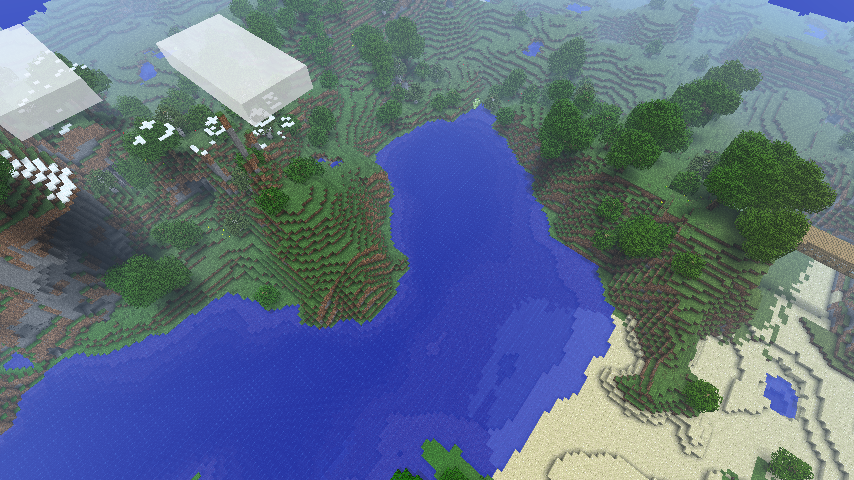
Let’s start with the cliff area in the top right of the photo.

Defence/Offence: The Murder Bridge
The best way to defend a cliff is to make a “Murder Bridge” across the gap. Murder Bridges allow you to both Drop TNT on your enemies, and rain arrows down on the survivors. It is Very difficult to navigate past a proper Murder Bridge without finding an alternate route.
This is a finished Murder Bridge from the inside.

First, make a platform across the canyon in whatever way you wish (I use wood because I can burn the bridge to avoid my enemies capturing it.)

The walls should be 2 high for maximum effectiveness. Cut out two blocks vertically every other block to match the completed picture. Place glass in the top block, and leave the bottom block empty. Place buttons on the bottom block of every other ‘pillar’ as shown in the picture. The buttons allow for TNT to be dropped from the Murder Holes. Place lighting as you see fit, I prefer to have it on the pillars without buttons so soldiers don’t knock it off in combat by accident.
Now you should make a small armoury in the side of the mountain, to contain weapons to defend the cliffs
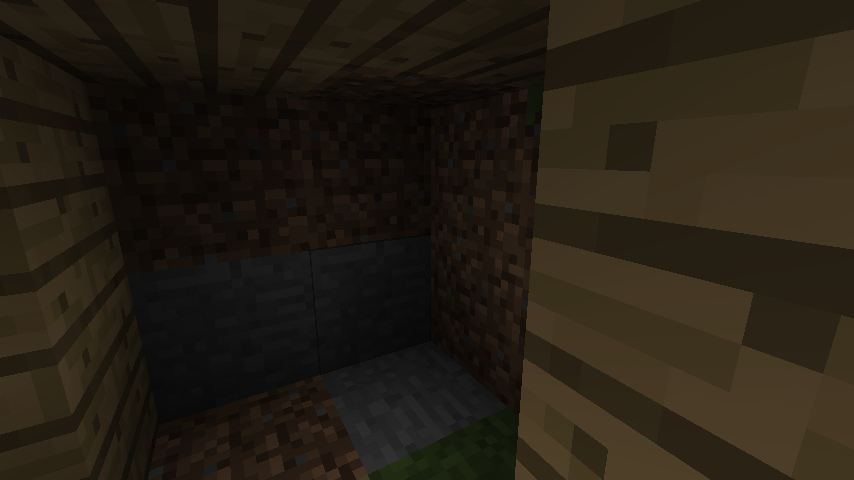
Defence: Choosing locations
Choosing the location of a base/fort is often the hardest part of creating a new base of operations. In the first photo showing the Location we could be defending, I see several possible places to make a new fort.
This field under the over hang. Areas surrounded by tall mountains are excellent because they offer natural defence against small attacks. It is good to set up small guard posts along the mountain tops to deter attacks. This area also has access to the sea, and I can see(no pun intended) several caves that are ripe to be mined.
 This Island in the middle of the large sea is an excellent place to begin work on a fort. Remember, surrounding your castle with a moat is easier if the moat is large and already there for you! The only draw back is that you have to either build a bridge (Making it easier to access the island for either you or your enemies) or boat to shore to collect most resources. Of course, you can make tree farms, cobblestone generators, and wheat farms within the castle. And fishing from the sea would provide plenty of food.
This Island in the middle of the large sea is an excellent place to begin work on a fort. Remember, surrounding your castle with a moat is easier if the moat is large and already there for you! The only draw back is that you have to either build a bridge (Making it easier to access the island for either you or your enemies) or boat to shore to collect most resources. Of course, you can make tree farms, cobblestone generators, and wheat farms within the castle. And fishing from the sea would provide plenty of food.
Defence(Possibly Offence): Hidden Storage Areas
Putting hidden storage rooms near landmarks is a great idea. Tell the people who need to access the supplies where it is, and they can find it. But it’s out of sight so the enemy won’t find it.

Why what a lovely tree we have there!
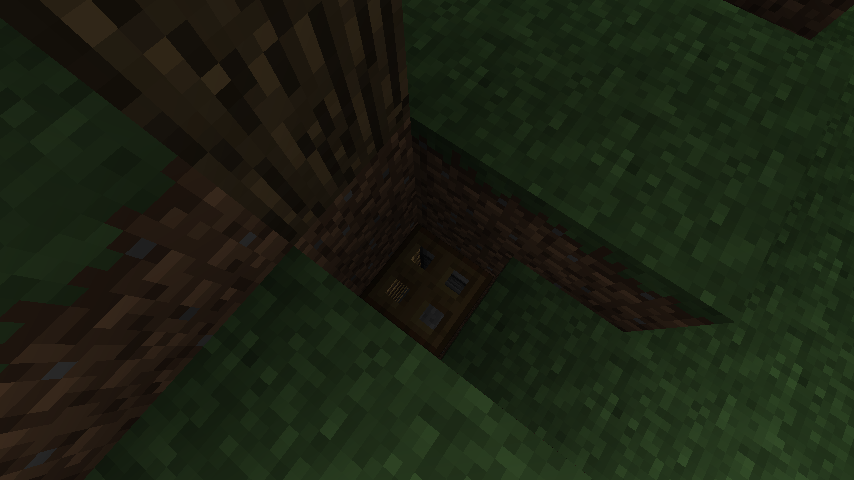
What’s this? There’s a trap door under the ground next to it!
Things to note: The only non-natural blocks used are the ones needed for storage. Anti-XRAY mods should take care of Xray users, and most people don’t mine the first 3-4 layers of the ground anyway. But if they see Cobblestone, or wood, or another block that doesn’t belong they’re sure to investigate.
Real Combat: Surviving an Ambush (Quick Thinking and using the terrain)
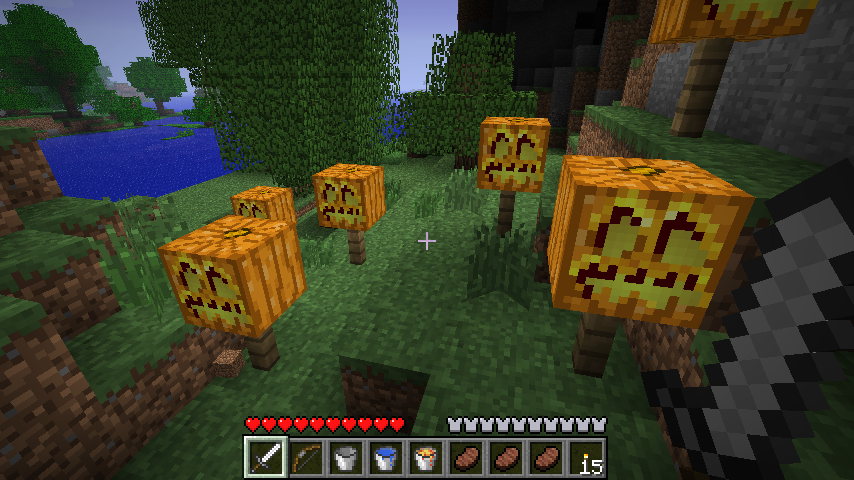
Oh no! The Evil Pumpkin army has trapped me in this corner, and the only way I can go is into this cave!

Wait, What’s that? I’ve got an idea!

Let me just block this entrance so they can’t follow me
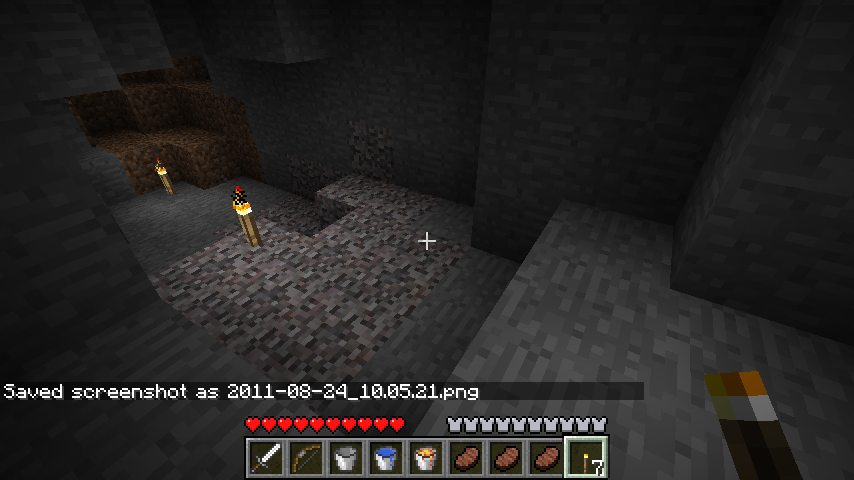
And go through the cave and find that overhang!

Found it! And look, the perfect vantage point to kill my assailants
Offence: Taking down Heavily Defended positions
The best way to take down a heavily guarded position is to be both heavily guarded yourself, and aggressive. Don’t hesitate to use any dirty moves you can to dislodge the enemy from the position.
To demonstrate how one would go about starting such an engagement, we will pretend some sort of amazing thing is behind my Murder Bridge from earlier.
Let’s begin by examining the target:
It is wooden, probably so that the enemy can retreat if needed. If we want to keep the guard post, we need to be quick when we attack.
It is elevated, so TNT Cannons are out of the question. By the time we got cannons ready to destroy it, we’d be dead.
The Enemy can drop TNT on us if we get to close, we need to either stay out of sight, or far away.
The Enemy can hit any target in front of the bridge with arrows.
How To: Choose the Location for your bunker!
1. Note the surrounding terrain. Do not build your bunker on sand, it makes it next to impossible to tunnel past enemy lines later on, and leads to difficulty due to sand’s physic nature.
2. Note what directions the enemy can easily attack in, and what directions they can easily be attacked from.
3. Decide what type of attack will be most effective for the situation, and plan accordingly.
Take all of those into consideration when building your bunker.
In this case, I chose the small area of dirt off to the right side of the Bridge. It has a good angle to launch arrows at anyone exiting the bridge, and men can easily scale the hill to attack it. Plus, TNT and arrows from the bridge are rendered useless.
How To: Build your bunker while under fire
USE STONE, WOOD, DIRT, SAND, AND OTHER MATERIALS ARE WEAKER AND EASIER TO DESTROY IN COMBAT
It is likely that unless you begin your offence at night, you will be under fire from the enemy.
First you need a wall to take shelter from the volleys of arrows, so get that up first.
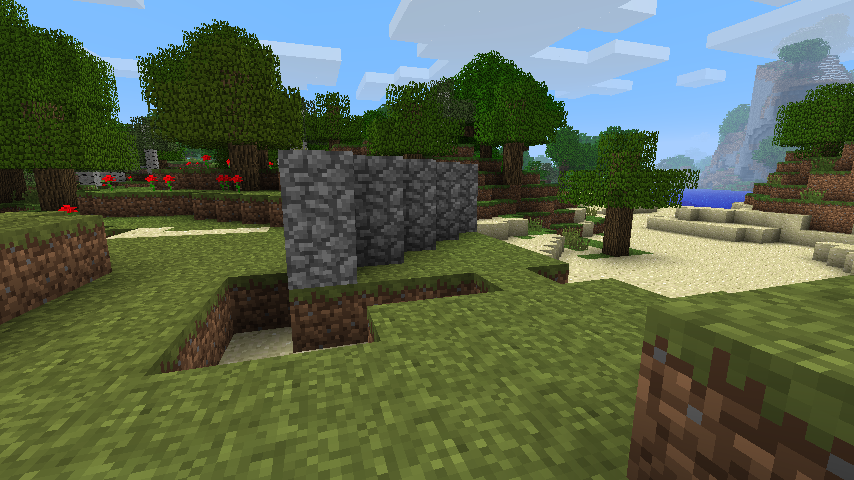
Next make some ladders up to the top of the wall, and surround them with dirt for a temporary floor.
Dirt can be used for parts of the structure that aren’t permanent or high security (You walls, the ones saving you from volleys of arrows, should always be stone).
You can also throw some windows in to observe the battle from
This gives you a good location to fire back at any enemy ground troops
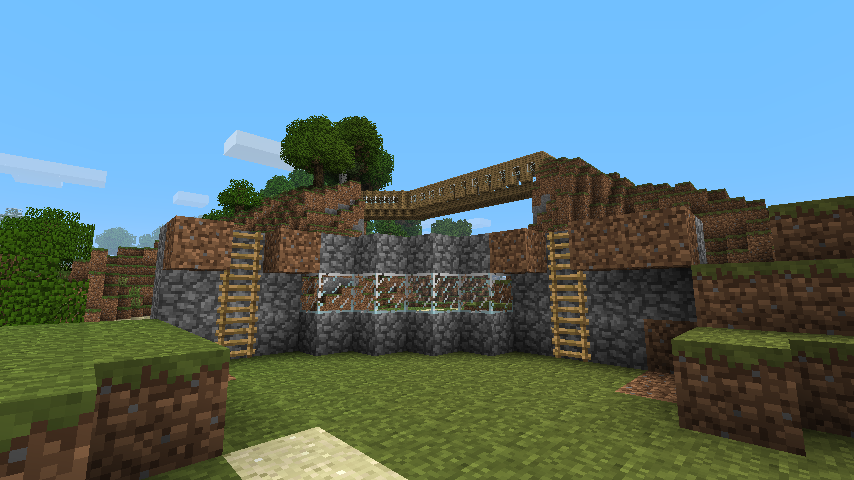
Next, set up your supplies to make siege with:
Chests to store food, weapons, armour.
Furnace – Cook food and smelt ore.
Workbench – Make tools and weapons.
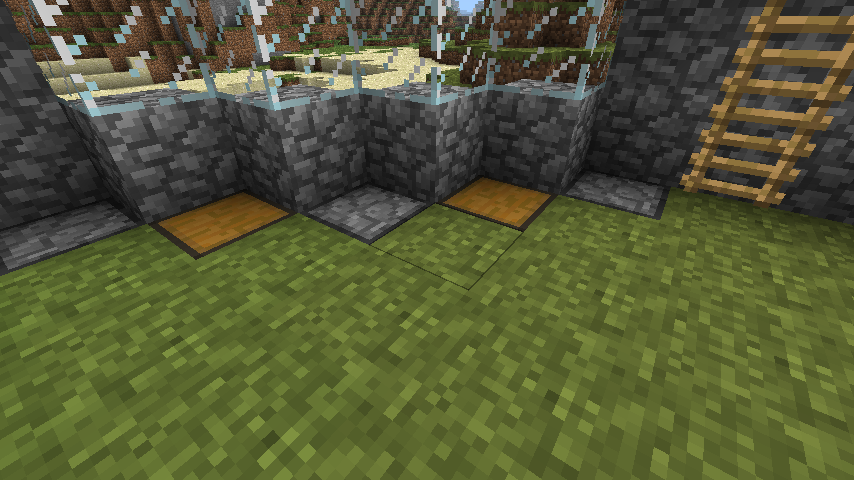
(Note: I would probably replace that middle furnace with a workbench)
At this point, you can tell that the troops inside the bridge cannot fire at you:
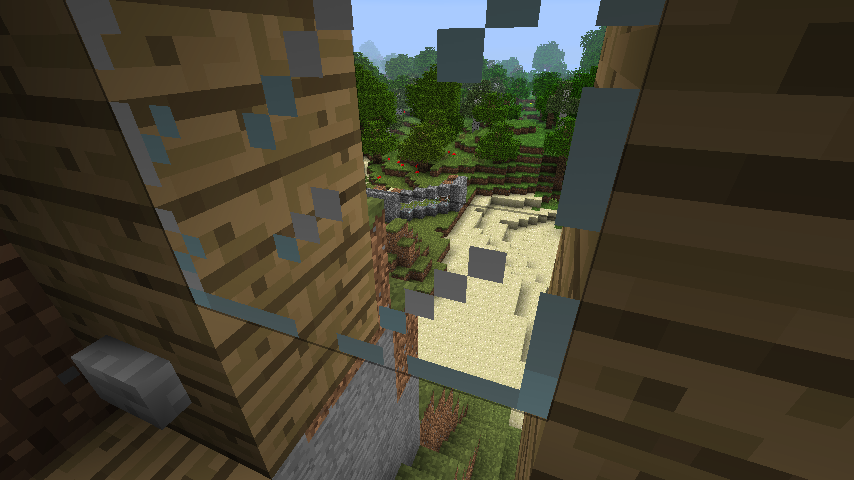
While you have a perfect shot, although difficult, at anyone poking their head out.

Now for the fun part: Tunneling
Make sure the entrance to your tunnels is somewhere the enemy can’t see, otherwise they will realise what you’re trying to do!
Give your diggers a map, and have them tunnel all the way PAST the bridge.
WHEN TUNNELLING, BE SURE TO AVOID SAND. SEEING SAND FALL RANDOMLY OUT OF NOWHERE IS A TELL TALE SIGN THAT SOMEONE IS DIGGING UNDER IT. IN OTHER WORDS: YOU WILL BE FOUND.

The final step in getting fortified is to strengthen your Bunker and make sure that it’s safe from any rogue arrows.

At this point you have multiple options of how to attack the bridge, and can proceed as you wish.
Offensive Defence Destroying enemy Bunkers
Destroying something that is being used against you, and will only ever serve to be used against you, is the only time destroying an enemy base would be wise.
In this example we will pretend that You’re a soldier inside of the murder bridge we are assaulting above.
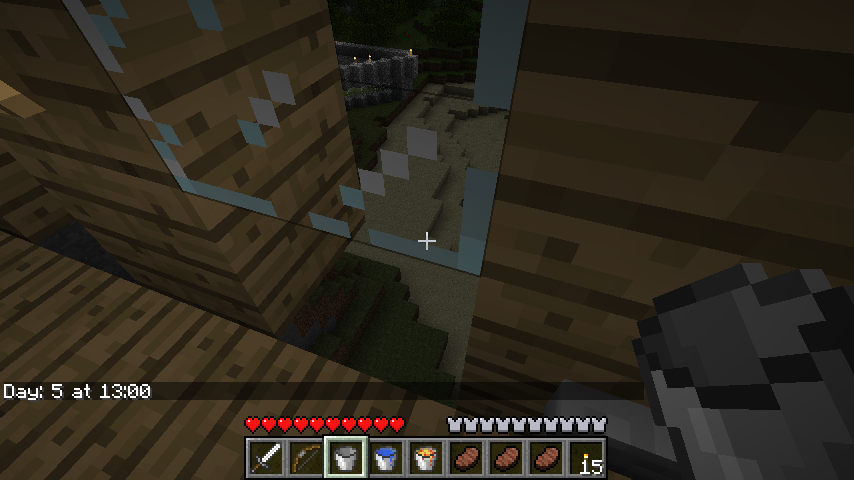
A good way to get down from high objects is to water parachute. You simply place water and pick it up about two seconds later. Then you ride the water safely down to the ground.
You’d have to break the glass to do this in the murder bridge
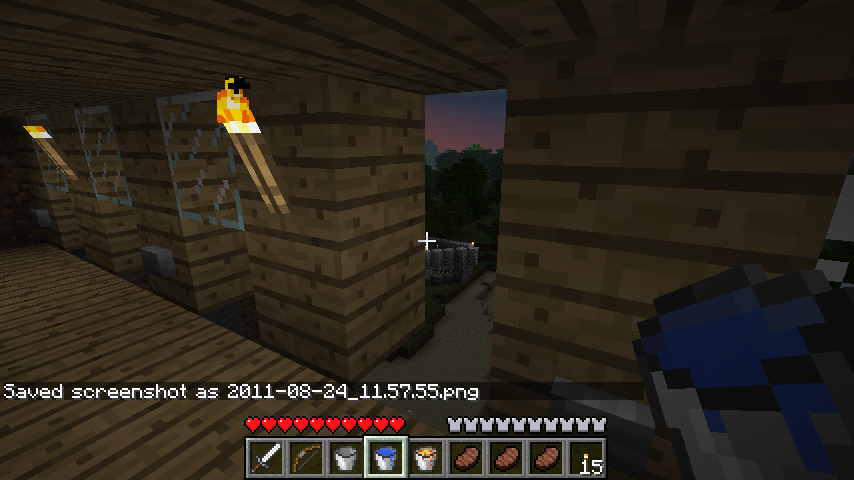
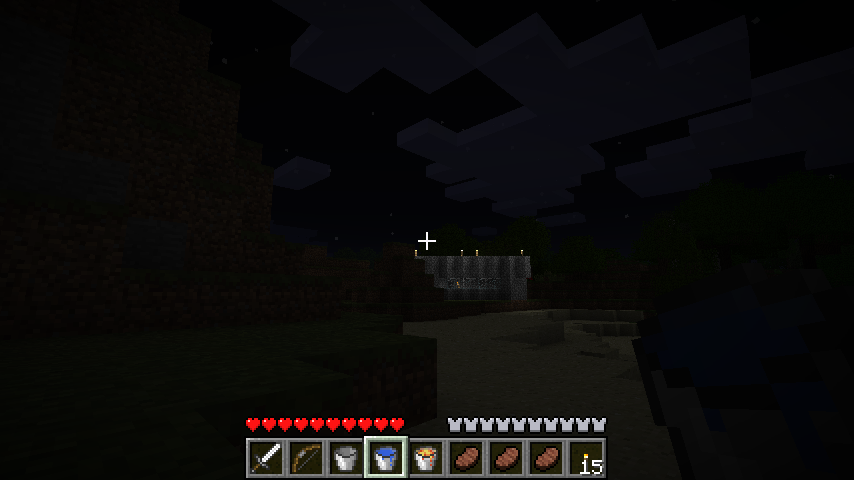
At the moment you’re in clear view of the Bunker, better move fast!
Try to get out of the line of sight!
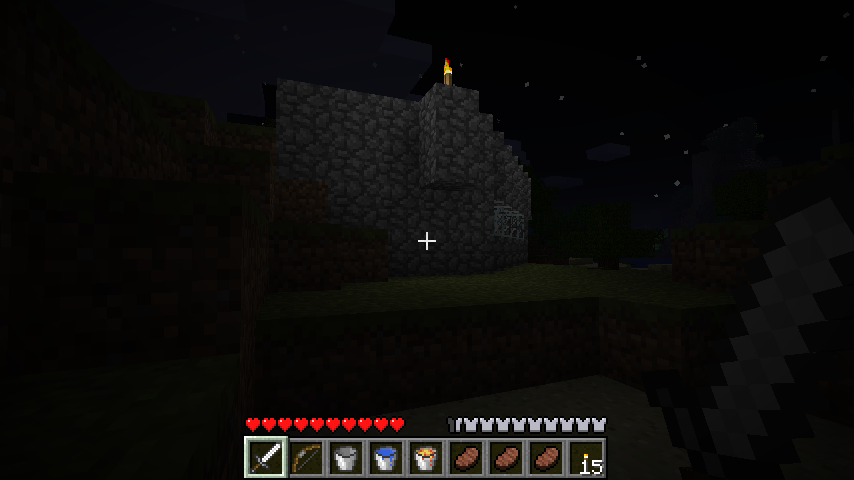
To prove that you can’t really see that corner/past it here’s a picture of me looking out the window at a pumpkin:
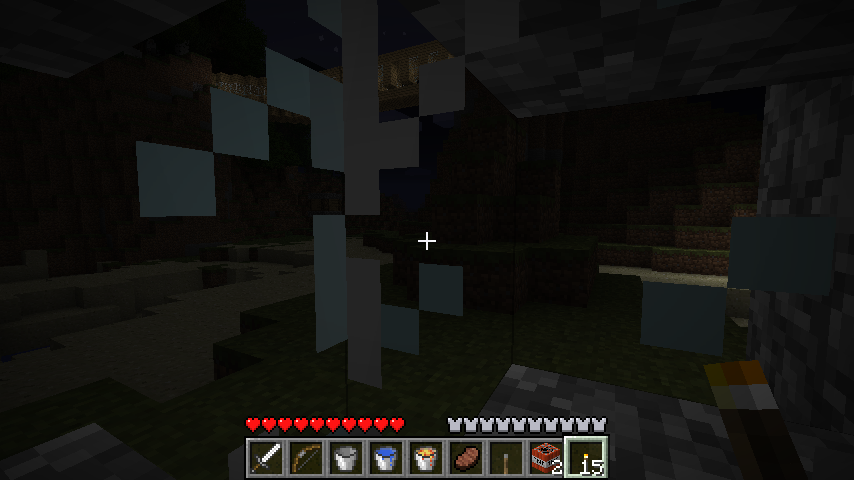
(You can tell where it is because I lit it up)
Back to the destroying the bunker thing!
Climb onto the roof, and set up that TNT you stole from the engineers:

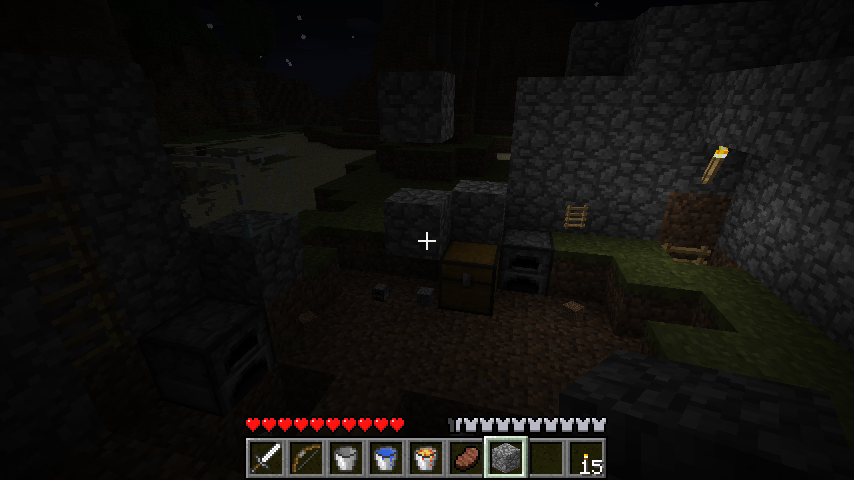
BOOM! Everyone inside the bunker is dead, and you discovered their tunnel and can likely corner the miners inside if there are any.
You also can steal whatever is in the chest/furnaces. Good Work
Artillery
One of the best ways to defend a base is through explosives. We’ve already seen the Murder Bridge use some. But TNT can also be used to bomb enemies from afar; much like those pesky enemies that used to have a bunker by our Bridge. We could have prevented that situation if we had an Artillery station facing that direction.
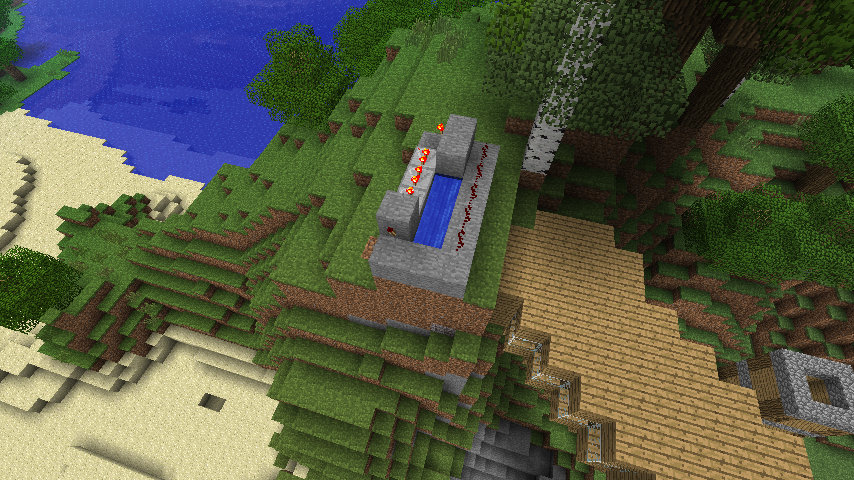 So Let’s build one!
So Let’s build one!
Tutorial can be found here: http://www.minecraft…als/TNT_Cannons
You can adjust the range of the cannon by removing/adding TNT.
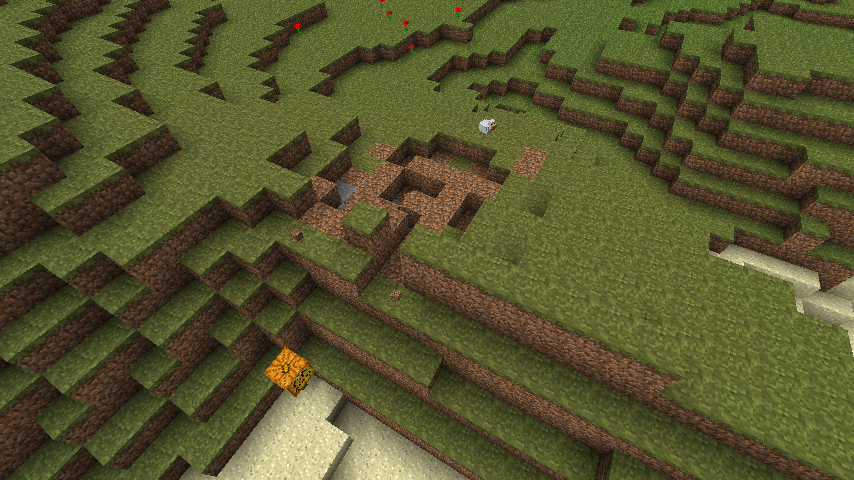 Here we see that I overshot the pumpkin soldier.
Here we see that I overshot the pumpkin soldier.
XIV. Intelligence and Espionage
a. The purpose
The purpose of Intelligence Gathering and Espionage is to give oneself the upper-hand in battle through foreknowledge. Foreknowledge directly multiplies the momentum and power you can have in decided battles, and the more you know the more powerful you are. Foreknowledge only comes from observations by oneself or one’s spies. No matter how much experience one has, it will never allow one to predict the next moves of a competent general. Sources of information should always be taken with a grain of salt, but if one is frugal about who one gives the job of spy, one should feel no reason to mistrust their loyalty. If one knows the moves your opponent is about to make, one can counter easily and make a huge P cost, winning move. The use of massive amounts of spies and scouts to gather intelligence can seem like a waste of valuable resources, on something that a few people can do instead, but in the end payouts from finding a good piece of information can be huge. Keep in mind, once a piece of information is comprimised by one spy, one must re-structure all pieces of information so that the spy one will remove of does not spill codes and base locations in all their entireity.
b. Camouflage
Utilizing camouflage in order to remain unseen is of the utmost importance, especially to those in the profession of espionage. Creating customized skins that mirror the colors seen in the environments that the spying will be done is to your advantage. Cleverly designed skins could make players nearly invisbile from certain angles. However… I personally would deem creating literally invisible skins, or utilizing the same exact textures as seen in the texture pack, as some form of cheating. Generally using the same texture as a texture pack is also a bad idea becuase if another player is using a different texture pack [which is commonly the case] then you will be spotted easily. [assuming your opponent isn’t using a texture pack… camouflage is a fantastic idea!] [It’s also annoying how your name pops up in front of you wherever you are… it makes it really hard to sneak around…]
c. Fake Spies
It is perhaps to your advantage to put to use fake spies that intentionally leave false trails for enemies to find. These false trails can cause the enemy to become paranoid and pay less attention to other areas that you are actually trying to study closer with your real spies. “Getting in early” is an important concept to understand. Getting a spy in an enemy clan before ever even having any contact with them is always one of the best situations to put yourself in, becuase it eliminates you as a suspect later on when the ranks of the enemy begin to question themselves. Sewing dissent in the enemy ranks can only further your cause for victory.
d. Sabotage
The most important utility job that a Spy can perform is Sabotage. This can be in any way from placing blocks in places they shouldn’t go, to mixing up redstone, to placing TNT inside a fortress, to breaking down complex mechanisms within a fortress such as a mine cart system. Spies have a very important job of breaking down the enemy operation from the inside out. Send only your best and most trusted soldiers out as your spy unit and you will reap great P costs.
e. Proper Sabotage Technique:
f. Communication
Edit: In my opinion, the BEST form of communication is over a SECURE PASSWORDED voice chat server such as Ventrillo, Teamspeak, or Mumble. Utilizing these VOIP servers to your advantage is a much quicker, and safer way to relay messages to your teammates. Please don’t clutter the chat channels of Minecraft servers with useless, or even worse, valuable and secure information.
Telegraphing:
Using long [hidden] wires of redstone, connected through basic inverted circuits, or perhaps something more efficient that a redstone engineer can think of, one can connect a net of communication between all base locations. Use this tactic with great caution, however, for when an enemy discovers your base location, they might be able to trade your redstone wires to the next hidden base. It’s best to only connect bases within some sort of proximity.
Using this telegraphing method one can either send morse-code like messages to allies using switches or use it as a sort of distress signal.
Coding (Suggested by Smurf):
In a war based on resources, keeping precious resources safe is the biggest priority. The best way to do such a thing is by massive amounts of deception and secrecy, as Sun Tzu points out constantly. Through secrecy, however, comes sacrafice. Keeping the location of safehouses and fortresses hidden deep within the underground labyrinths of minecraft requires that only the most trusted of your soldiers know the locations of the largest storage areas. They are the most likely to be the most careful around the areas, and not be caught by enemy spies. It has been suggested by Smurf that each army develop their own unique system of multi-layered coding that allows them to divulge coded maps to their soldiers. Basic soldiers and new recruits would only gain access to the first level of codes, meaning that they will never know where the main base is, but only small caches of resources for their use. Only the most trusted of all members in an army may ever see the main base in all its glory, depending on how secretive the general of their army wishes to be. Multi-layered coding also has the added benefit being that if one layer is discovered by the enemy, it does not mean all hope is lost and that the code is broken. It means simply that the location of a handful of your bases have been discovered. This can be countered by quickly moving their location to a higher security fortress. Coding can be done through any means including signs, blocks, and even outside of the Minecraft world. The importance of coding to ensure secrecy of the base is utmost.
Code Breaking:
Upon the advent of the coder comes yet another, the code breaker. Code breakers will have a hugely important job of attempting to crack enemy codes. Code-breakers need a degree of intelligence far beyond the normal caliber if they are to be breaking codes created by some of the most clever minecraft generals. The most IMPORTANT thing to remember is to search for patterns. The human mind, even when attempting with all its might to be random, always seems to come out with some sort of pattern to regulate itself. Patterns will be inherent in codes, and when you learn to recognize obvious patterns simply by their looks, you become a great asset to your army, allowing them to find the location of enemy resource caches with ease.
Dead Dropping (Suggested by Joe51498):
Dead dropping is a technique revolving around the skilled use of spies. Spies given very specific missions, that you wish for nobody else to know about, can be given missions through a dead drop. These spies are told to report to a very specific location, at a very specific time. Perhaps the bottom of a lake, or the deep inside of a mountain. Upon arriving, they will find a coded message including their mission and resources for completing the mission placed in the agreed zone, by “The Handler”. The spy should be able to decode in a short amount of time. The message should also designate a new meeting place once the spy completes their mission. The spy might also leave at the drop zone resources they wish for the handler to take back to base, or a new coded message for the handler. After the spy leaves [and cleans up the dead drop except for what he left], the handler will return and clean up the dead drop completely, removing all traces that the spy had ever been there to recieve a message. It’s not a quick method of communication by any means, but it is perhaps one of the more secretive.
Valerius’ Corner
Disclaimer: I am a boring and long winded person.
On: Running a Clan
On November 11th, 2010, after learning about “The Art of War” through a chance encounter on the internet, and having been investing copius amounts of time into Minecraft… a small seed was planted in my brain. On that same day, I set to work writing the first draft of this thread, and on that same day, the Art of War thread was introduced to the Minecraft world. The initial reactions of a few people seemed positive enough to galvanize me into a series of daily updates, and seemed to stem a few very deep tactical discussions. I watched each day as the view count grew by hundreds, and then thousands. After seeing the intelligence and dedication of a choice few posters, a new seed was planted in my brain… one of practicality rather than theory. My idea was to birth a clan in which these tactical ideals would flourish… a mature player base in which we could dicuss tactics and warfare on an even larger scale, and on a more personal level… and so the initial rumblings of Orsa Novus Aevum were born…
I’m proud to say that after six months of being clan leader, along with the help of Etherimp [to whom I owe SO MUCH in terms of initial guidance and clan leader mentorship], we are still going quite strong, and have near 50 ACTIVE members who visit our forum, join our irc, or talk to eachother in our mumble voip nearly EVERY DAY. This sort of dedicated player base in a clan of this medium size is very rare, and I am happy that we have turned out as such. We have grown past the point of “clan” into the realm of “brotherhood” or “family”. We know eachothers’ first names, we’ve seen what the other members look like, and we hear their voices almost more often than people we see every day offline. I’d like to think that we’ve come pretty far and been successful in our endeavors.
We’ve played on and been the bane of many players in the old Project Art of War server [which no longer exists]. We’re banding together now to play on the new Project Art of War: Revived server. We’ve attempted to spread technological and intellectual insight into the technologies of Minecraft with the Minecraft Scientific Foundation Public Request forum [which only one person has taken full advantage of...]
We’ve establshed a name for ourselves which many clans on the forums will attest to if you ask them about us, though perhaps just as many will not even know who we are. There are rumblings of us getting our own permanent clan server [finally] soon. We had something like one in our beginning few months, and used it until PAOW came out. After that, we migrated to PAOW, and a few months ago, PAOW dissolved.
The following are some advices that I have summoned from my experience, been given by Etherimp, or have found through some other mysterious source:
Here is my clan thread, so you can follow along.
First and foremost: SET GUIDELINES/REQUIREMENTS and FOSTER AN ENVIRONMENT OF ACTIVITY AND COMMUNICATION
I cannot stress this point enough. Inactive clans die. Clans that do not communicate die. Clans that fit both categories are already dead. The most important thing, and FIRST THING you should do as a clan leader, before even figuring out a chain of command, is to come up with a set of rules to live by. It’s also important to decide what type of people you want into the clan, and to create an application tailored to those needs.My clan, Orsa Novus Aevum, only has three rules. However, these rules are far reaching, and cover the most important areas of both internet and real life.
Valerius_Maximus said:
There are only three clan rules so far:
1. Unannounced Inactivity can’t be tolerated, so don’t join if you’re not going to be an active member. You will NOT BE PROMOTED if you are not active in all aspects of the clan… [IRC... Forums... Server]. Inactivity slowly kills a community from the inside out, like an incurable cancer. It spreads even to the most prominent members. That said…
2. Real Life takes precedent to Minecraft. Don’t miss out on your obligations. If you’re in school, don’t shirk off homework. It’s just a game. If you have a pressing issue to take care of, that will incapacitate you from the clan for a long period of time… tell me, or anyone really who could relay the message to me… and I’ll obviously understand.
3. Honor the Chain of Command. The Chain of Command is what gives this community a sense of purpose. We are here to teach, you come here to learn, and then perhaps teach others yourself. Ultimately, we wish to become a central intelligence hub of all things Minecraft War. The more you know, and the more experience you have, the higher your rank will be. Members showing considerably more skill, and maturity, will rise in the ranks much faster, relative to anyone else. When you honor the Chain of Command you are doing both Orsa Novus Aevum and yourself a favor.
My clan’s application is rather lengthy compared to other clans, but I do not feel it encroaches too much on any sort of personal level:
Valerius_Maximus said:
~Orsa Novus Ævum Common Application~
-=-=-=-=-=-=-=-=-=-=–=-=-=-=-=-=-=-
Age:
In Game Name:
Where you heard of ONA:
Previous Clans:
Why you wish to join ONA:
Where you think you will fit in best:
Do you play any of these games [Battlfield Bad Company 2, League of Legends, Pokemon]:
If you were an animal… what animal would you be:
I, [username] understand that if I am not actively communicating with the clan [IRC, Forum, TS, etc...] I will be removed due to inactivity [Yes/No]
We ask for age because we have a 16+ age limit. We ask for where they have heard of us for various reasons, but most importantly to root out spies in times of war. We ask for previous clans for the same reason. We ask for a reason to join ONA because it will prove they at least have the attention span to answer a simple judgemental question. We ask where they will fit in best so they can sell themself with any special skills they might have. We ask if they play any of the other games that people in our clan enjoy and play together, to see if they’d fit in, in that respect. We ask what animal they would like to be… because… well… it’s a secret. Finally we make it VERY CLEAR that being an active member of the community is necessary. We take a no nonsense approach to inactivity, which I believe is the best possible approach.
Secondly: Maturity, is it an issue?
In my personal opinion, EVERY SINGLE CLAN should seek to recruit only a mature player base, however… many will disagree with me, and have disagreed with me, on my clan’s 16+ age limit. There are CERTAINLY exceptions to the rule, but the majority of children under the age of 16 are intolerable when it comes to giving orders, in my opinion. However, the question of maturity is really only an issue IF you ARE going to be giving orders. If you are simply forming a clan for fun, a clan which likes to build, a clan for a silly cause, then maturity really isn’t going to be an issue except when it causes intra-clan drama. If you are certain of a player’s maturity, and it belies their age, then by all means accept them into your community if they fit the rest of the criterion.
Third: Mediums of Communication
Orsa Novus Aevum uses these mediums of communication to speak with their members, the Orsa Novus Aevum network is rather large:
IRC – Instant text transmission, and a public way for people to learn about and talk to members of the clan. Our irc is #OrsaNovusAevum on irc.gamesurge.net
Mumble – VOIP client for talking to eachother with microphones, overall it’s better for communicating while in-game, and quicker to get orders out and/or pertinent information. It’s also fun to just sit and chat about ANYTHING and it builds camraderie between the members.
Personal Forums – Every clan needs these as a bare minimum. You can create them free in just about 1000 places online. Personal forums should be PRIVATE and open to CLAN MEMBERS ONLY, except for a select few topics such as the off-topic section where top secret information should not be posted.
Clan Youtube Channel – For posting fraps of games and/or random videos for the clan. In general quite fun to have.
Clan Email Address for support – Useful for support
Clan AIM Address for support – Useful for support
Clan Facebook – Useful for networking, definitely not necessary… my clan barely has ever posted anything.
Having a large clan network simply opens you up for communication on many different fields, and fosters a close knit relationship between clan members.
Fourth: Can you handle it? Are you a good leader?
Micromanagement… have you ever heard of it? It’s something that a clan leader needs to be EXCESSIVELY good at. Trust me. I manage our clan forum, and micromanage each of the 54+ users and user profiles to make sure that all the information is up to date. There are around 20+ Stickies/Global Announcements that I have to oversee and update. I’ve set up very precise security for each forum within the board, giving access to very specific ranks of people. I’ve set up threads for orders based on rank, with each rank getting it’s own hidden forum specifically for their orders, while at the same time giving them access to lower tiered orders. I could continue on a huge tangent about how many different things I micromanage, but I think you get the idea… What I’m trying to say is that as a clan leader, you have to have the time and dedication to spend on your clan. Minecraft is just a game, but if you are truly passionate enough about it to lead a clan, you might be passionate enough about it to keep the clan going in a state of more than just subsistence. I’m going to say that many clans out there are simply in the subsistence state, due to an incompetence of leaders. However, I can’t say that I have done every single thing perfect. I’ve had SO MUCH guidance from Etherimp along the way, and for that I’m extremely thankful. Between the two of us, we’ve literally be carrying this clan on our back. I have micromanaged the clan from the beginning, while Etherimp has been more of the Macro scale manager. That’s why I’m the commander, behind the lines calling the shots, and why Etherimp is the general, in the fray with the men directing them to action. I’m of the philosophy, if you want something done right, do it yourself… or get Etherimp to do it. Seriously, I doubt there are many people out there like him… and if you find someone that you absolutely trust in, and know is going to do the best they can for your clan from the very beginning… you make that person your right hand man and you’re golden for the rest of the clan’s life, honestly. You need to get a solid CORE of members. From the core, you can build on it, and grow into a legion of active individuals. Ultimately, your goal as leader is to be in the midst of it all, controlling the flow of information between members of the clan, completely immersed in the experience.
On: How to Beat Hackers
First of all, let’s throw down some GUIDELines and definitions which establish the boundaries of hacking/exploiting against commonly used glitches.
Things that should be [and are] generally approved of:
Fair glitches that are exploitable by all users without external influence on the client. One should be able to perform it simply by running minecraft, without tweaking ANY settings, and hitting play. These include most physics glitches and features: Water ladders, Boatavators, TNT Cannons, etc.
Things that should not be [and generally aren't...] approved of:
Exploits and/or modifications to the Minecraft client which allow one to see through walls [X-ray texture packs or simply modded clients], or allow one to travel at immense speeds [fly hacks, etc] or otherwise allow a player to do something that no other player running the normal Minecraft client should be able to do. These hacks/exploits give unfair advantages to a player and make the battlefield an uneven plataeu, sloped towards the hacker. They are game-breakingly advantageous. Being able to fly over large amounts of terrain and look for hidden enemy bases through the ground takes all of the skill out of playing Minecraft in the tactical fashion outlined in this thread.
How to beat them:
In terms of these modded clients, texture packs, fly hacks, etc… it’s nearly 100% impossible to catch a user that is utilizing them simply by the fact that they connected to your server. It’s nearly impossible to incriminate a Minecraft player unless you see them directly partaking in an act which involves the use of these unfair tools. Allegations are not enough on most servers to get the hacker banned, and with good reason. People should not be able to simply call people they cannot defeat hackers in order to get them removed from a server. However, this leaves many servers open to those users who attempt to use methods of cheating in secret.
X-Ray Texture Packs: There is a single fatal flaw inherent in all of the X-ray texture packs I have ever seen. None of them seem to be able to do away with Lava. For this reason, it’s important to note the tactical use of lava to hide a base that is already hidden. Place a layer or two of lava above a hidden base so it is invisible even to those who can see through the ground. Keep the bases small and unlit when not in use, so that they seem like empty caves. Using these two techniques Orsa Novus Aevum has been able to keep off the trail of hackers in the past.
Fly Hacks: While there is no successful way to “BEAT” fly hackers, you could have an admin in your server install a floating chest mod, which autobans a player who opens the floating chest. If placed in spawn, where normal players have no way to pillar up and touch the chest… only a really dumb fly-hacker would be able to reach it in the first place. If they did not realize it was a trap for people just like them, they would be dealt with immediately.
In general, report all suspicious activity to server moderators and admins, and have them deal with the problem. If you get the cohorts of the hacker to admit that they were indeed hacking, use this as evidence to prove your case.
All in all, stay honorable and respectful players, and things will generally fall in the way you want them to.
On: How to Train your Army
I’ll be drawing from my own clan experience here…
With 54 members, Orsa Novus Aevum needs to be able to train its members quickly and effectively, to ready them for battle amongst some of the greatest soldiers Minecraft has to offer. We do this through methods of training, which engange the Mental and Physics aspects of War.
We hold classes on our private forums for members of the Private rank and up. These classes are worth “Knowledge” points on our board, similar to “diamonds” here on the Minecraft forums, except used as a grading system. The higher the “knowledge” the better you have performed in classes. The classes range from basic Minecraft physics to Trap Spotting, to general tactics. The soldiers have taken to them very kindly.
In terms of physical training, on servers, here are some tips:
Practice sword fighting techniques (Two versus One, Kiting, Leading) with a WOODEN SWORD only. This makes palyers focus on making EVERY HIT count because they do so little damage. It raisies the ability to click accurately in the correct pattern for sword fighting. Players should also wear NO ARMOUR when training, as it makes them concentrate more on not being hit by the enemy.
Train bows from a medium range, with only 10 or less arrows in the quiver. This focuses players on accuracy rather than speed, and makes for beter archers in the long run. Also, they should have no food, meaning that players must focus on dodging arrows to survive in a fight such as those.
Train on natural terrain, to simulate an ambush situation, rather than flat easy terrain simulating a siege. One must be familiar on all fields, and I’m willing to say 99% of Minecrafters are more comfortable on a flat plane.
In terms of items train your soldiers to always have a sword, a bow, arrows, and 3 buckets [1 lava, 1 water, 1 empty] because buckets are the MOST powerful weapon in the game. They allow you to pour boiling hot lava onto your opponents, they allow you to control crowds with powerful flow, and they allow you to avoid other people’s buckets.
In order to foster competition within the clan, hold clan competitions and create a clan stats board on which players whom do well in the clan competitions are listed. This will foster intra-clan competition and make all of your soldiers strive to be better players in the long run. Promote those soldiers who you see as the most skilled, and most loyal to your clan.
These tips have been designed in order to help you better outfit your troops for war.
The Story of the Legion
This section will be about my trials and tribulations whilst leading The Legion in combat. It will include my triumphs and my utter stupidity. Be prepared to read, and learn from, both.
This is written in story form, because I wanted to, and I’m not sure how it turned out. Sorry if it sucks, but the information is still there. I am referred to as Justis, because that was my Character’s name on the server this happened on. Enjoy.
These events all are based on the true events of the PVP server Siegecraft, which I used to own.
Siegecraft has been succeeded by Cavera which can be found here:
http://www.minecraft…n/#entry7648039
Chapter 1: Illimus
’twas a chilly afternoon in the bustling city of Cavara. Evergreen trees swayed in the biting winter gale, and within the homes of the people children shivered near fireplaces yearning for warmth. Justis Brutii walked slowly down the frozen main street, stepping carefully to avoid slipping on the ice. He arrived at the Forum of Cavara, and stepped inside. Breathing heavily onto his hands in an attempt to regain warmth, Justis searched the lobby. He had come here with a purpose and had every intention of fulfilling it.
In the corner of the Lobby’s gilded entrance stood a man dressed in garments that only the richest of nobles could have possibly afforded. From head to toe this man had an air of importance, and with good reason. Catching eyes with the man who had just entered, Prince Illimus beckoned him to follow, and proceeded into a private side room.
Slowly pacing past the armed soldiers guarding the room, Justis bowed his head as he entered the door. Illimus said to him,
“Justis, my friend, it has been to long. Come, sit”
“I agree, my lord, but I have come here for business and fear there shall not be time for pleasantries.”, replied the proud man.
“As you wish Paladi, state your buisness.”
(At this point I should note Ranking systems in the Legion. New soldiers are known as Pueri[Boy], once they are trained they become Milites[Soldier]. A leader of ten soldiers is a Gladius[Sword], and a leader of three groups of soldiers is a Paladi[Made up word ![]() dirived from Paladin]
dirived from Paladin]
“Your father grows ill, and lays on his death bed. Does he not?” Justis asked quietly, almost as if whispering.
“Yes, I fear he has but few days remaining.” Said the prince, who now appeared to be staring into space, thinking about something he couldn’t see
“I am truly sorry, noble prince. He was a great man. But we must concentrate on the future, without an acting Emperor the nation will be in turmoil.” continued Brutii, “We need The Legion to re-arm themselves if we are to defend our borders from the barbarians massed against us.”
“Aye, The Legion has seen better days friend.” thought the Prince, “My father withdrew all of our forces from the borders to garrison Cavara City. We need a new leader to make our Nation’s warriors glorious again.”
“I can be that leader, sir”
“I believe that you could be, but you will have to prove yourself before you can gain my complete trust. Stated Illimus,”I will give you six men of your choice, tools, and food. Your task, friend, is to build a fortress on the Border of our Heartlands. Then, you shall take the city of Tamora.”
“As you wish sir, I will prepare at once” Justist said as he bowed and swiftly left the chambers.
(Note, the lesson learned from this chapter is that you need supplies, tools, and men before setting out to make your first stronghold
Chapter 2: Snowmoth
Cold air passed the shivering lips of Marcus, his near frozen hands gripped a shovel. To his right Piff struggled to remove heavy clay from the mountain side. They were working next to four other men, all tasked with creating a small cave to take shelter in.
Justis stood at the side of a large lake. The stillness of the crystal clear water gave it an eerie appearance of grace and elegance as snow fell onto it’s shores. Looking back to the towering mountain, Justis saw that his men had made progress on a shelter. Turning back towards the water, Justis scanned the bottom looking for the place where the water was deepest. Slowly marching back to his men, Justis wondered what the sylvan valley would look like after his stronghold was complete.
Several days later, Justis again stood on the shores of Lake Snowmoth(As it had come to be known). This time however, the Lake was all but still. The workers had made a bridge out to the deepest part of the water, and had begun making platforms to build a fortress on. Justis had wanted the fort to be on the water. He figured that although it wasn’t as safe as making an underground bunker, the fresh air would be worth the risk. Returning to the dugout shelter, Justis smiled at the good fortune he had encountered.
Watching every day as the men built his fortress, Justis became sure that he could succeed. His men’s morale was high, and every day the work seemed to be going by faster. It would be no longer then a week until it was complete, and then Justis could send for the rest of his small army. He began to formulate plans of attack, for he still had to take the city of Tamora in order to gain control of the entire Legion.
Once Fort Snowmoth was complete, Justis would become more aggressive than any army the Tamorans had ever faced. He prayed that the Tamorans hadn’t a clue what was coming, for it would give him a big advantage in a fight.
What you might have learned from this chapter; Always make a small shelter before you make a big fort. Building into a mountain means you only need to use tools, preferably stone because you’ll get the materials back from making the shelter, instead of wasting materials and tools to make an outdoor shelter. You also may have learned that building an underground shelter is safer, but above ground promotes morale. You should build above ground bases in the middle of lakes, and use wooden bridges. Also: always plan for your next move BEFORE your current one is complete, this allows you to act faster once the current move is finished AND gives you more time to consider every option.
Chapter 3: Tamora
Azor, smiled as the sunlight shined through the window and warmed his face. The city of Tamora, the capital of the Unified Barbarian Nations, was located in a rather tropical climate, and had pleasant weather at all times of the year.
Reflecting back on the struggles that brought him to this moment, Azor’s smile grew into a wide grin. The long nights working out strategies to remove opposition to the unification movement, and the even longer nights spent trying to please the newly unified Nation. The trials all seemed worth it now, for Azor had founded Tamora, a force that even once noble Cavera was not able to match.
Cavera had grown weak due to the King’s sickness, and Azor, along with his army of bloodthirsty Tamorans, planned on taking advantage of the opportunity. All he needed now was for his scouts to report back, and bring news of The Legion’s latest moves to secure Cavera’s heartlands.
“Sir, Joshua just returned! He brings great news…” said a voice from the hallway behind Azor.
Turning to face the voice, Azor saw that it belonged to his second in command. A man known only as Rock.
“Then by the gods, do tell me Rock!” he replied excitedly.
“The Legion have sent a small force of men into the Northlands, and they have built a Fortress on Lake Snowmoth. The Fortress has just been completed. If we attack now, before they tighten their hold on the area, we can drive them from the Northlands once and for all!” Rock ranted, also excited.
“No my friend, if The Legion has already set foot in the area then they will not be removed easily. We need to use trickery to gain the upper hand.” thought Azor, “Quickly! Send Joshua back, and request that they send a representative here!” he ordered.
Bowing his head, Rock exited the chambers and hurried to tell the scout his new mission. Azor turned back to face the window, and enjoyed the warm light coming through it.
What you learned in this chapter: Building a fort is the best way to be discovered. Honestly. Big buildings get seen fast, so you better be ready to defend that fort you just built as soon as you can. Sometimes even before it’s complete. When building your fort, make sure that it’s defences/offences are ready first.
Chapter 4: Representative
Justis frowned slightly as he climbed over the large rock block his path. He was following someone who would only identify as Joshua, on their way to the city of Tamora.
He knew this was the perfect opportunity, his mission was to find and conquer Tamora anyway, and now he had the chance to see it first hand. Justis wondered what the Tamorans could want with him, could they have found out about his mission?
“Halt Caveran, we approach the city.” Joshua proclaimed, “If you have any weapons please hand them over now, we don’t take kindly to armed guests.”
Deciding that facing an army of angry Tamorans single-handed was a terrible idea, Justis relinquished his sword.
“Should I expect that to be returned to me upon my departure?” he asked
“Yes, it will never leave your sight.” The scout answered, “We’re heading directly for the Council Chambers, you’ll be speaking directly to our leader Azor.”
While Justis pondered what the Tamorans had deemed important enough to allow him to meet their leader, Joshua led him through the city’s wooden gates.
Passing several small wooden houses and a few farms, they made their way through the winding streets into the vibrant and lively town square. Justis marvelled at the architecture on display. Never before had he seen such beautiful craftsmanship put into every building.
Justis knew that he could no longer destroy this beautiful city, he would have to take control of it from the Tamorans. As he tried to think of a way The Legion could conquer the city, Joshua shouted to some men in front of them “You, inform Azor that the Representative has arrived.”
What you learned in this chapter is that even though you should be more focused on building a STRONG city, a BEAUTIFUL city also improves Morale. However, a beautiful city also makes it more desirable to be conquered.
Chapter 4: Diplomatic Intervention
“So what do you think, Caveran?” asked Azor, his voice cold and smooth like a rounded stone.
“I think that an alliance would be most beneficial to both of our nations” Justis replied wickedly.
Knowing that an actual alliance with the Barbarians was out of the question, he had decided the best course of action would be to feign friendship.
“Good, good.” The Tamoran said, “We will speak again soon, you may return to Snowmoth.”
“I hope to bring great things of this alliance” said Justis, “Just not great for you Tamorans” he thought.
As Justis was escorted back to Snowmoth, he began to hatch a plan. He just hoped his men were ready to carry it out.
In this short chapter you should note some things:
1. Always accept an alliance. Always.
2. When you accept an alliance with an enemy, never expect it to last.
3. Use the brief period of peace to gather as much strength and supplies as possible, and try to be the one with the upper hand when the alliance crumbles.
Chapter 5: Preparing
Justis walked into the warm halls of Snowmoth shivering and near blue from cold. A blizzard raged outside and his men had been sheltering in the citadel for a few days prior. As soon as he warmed his body by the fire, Justis began to start planning his next move.
“You, Derick, Bring all the cloth we have and lay it out against this wall” He ordered.
Derick bowed his head and went to find cloth. Justis then went about gathering all of the various paints of all colors he could find. By the time he arrived back in the war room, where all the men had gathered, cloth was spread against one wall. Taking the paints, he drew a map of Cavera as they knew it on the wall.
He marked out locations such as the terrain he saw around Tamora, the cities along the way, and other important landmarks. Then he had his men gather their supplies and prepare to journey when the storm lifted.
This chapter should be obvious. Take your intel and draw it out, plan using maps, and find the best route of attack.
Minecraft Warfare Guide Images
We also give random image about Minecraft Warfare Guide hope you like this, we got this
images from arround the web .

![of War' Are Coming To 'Minecraft' [SCREENSHOTS] : Games : Gamenguide](http://images.gamenguide.com/data/images/full/4515/minecraft-on-xbl.jpg?w=720)

image source :

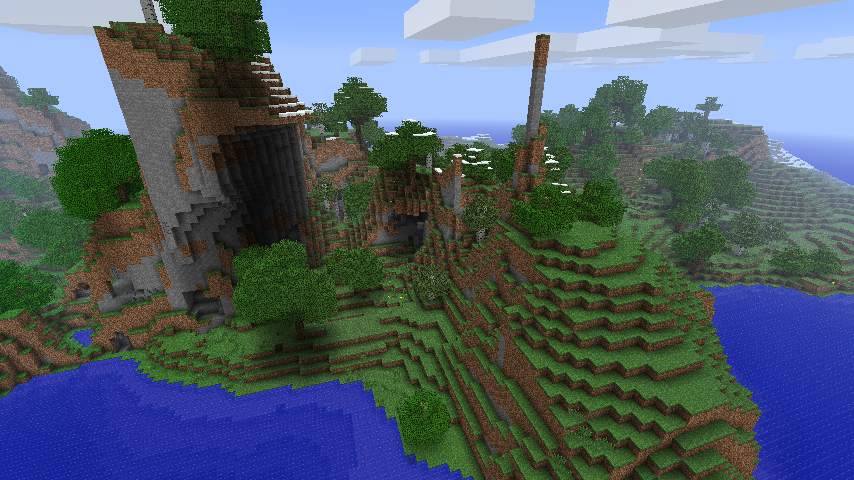
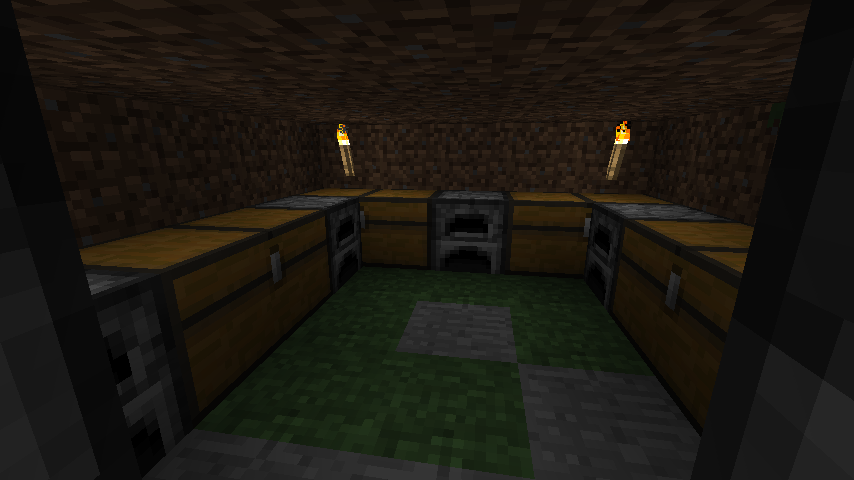
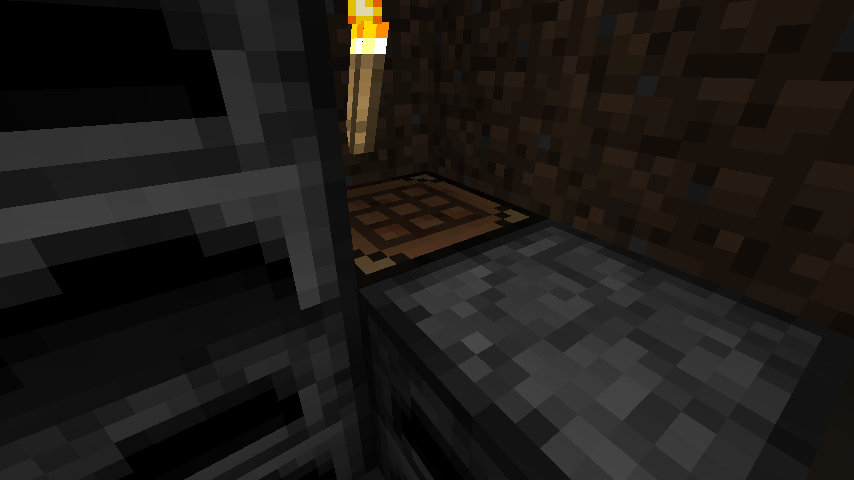
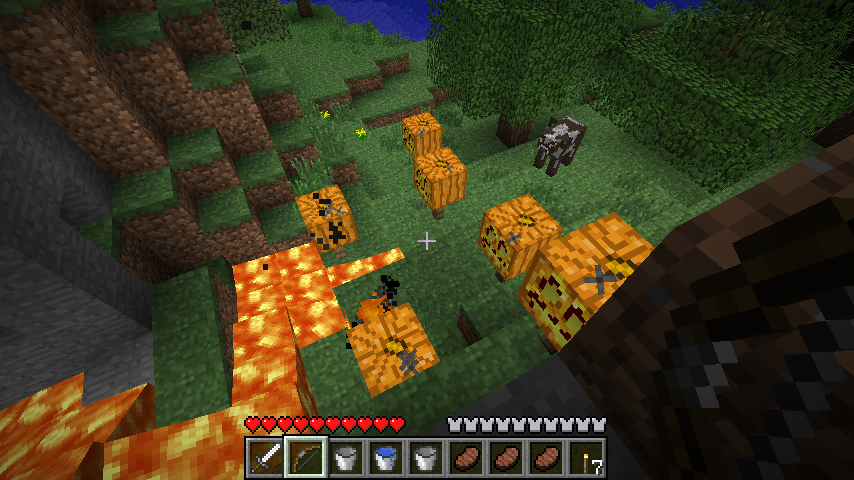
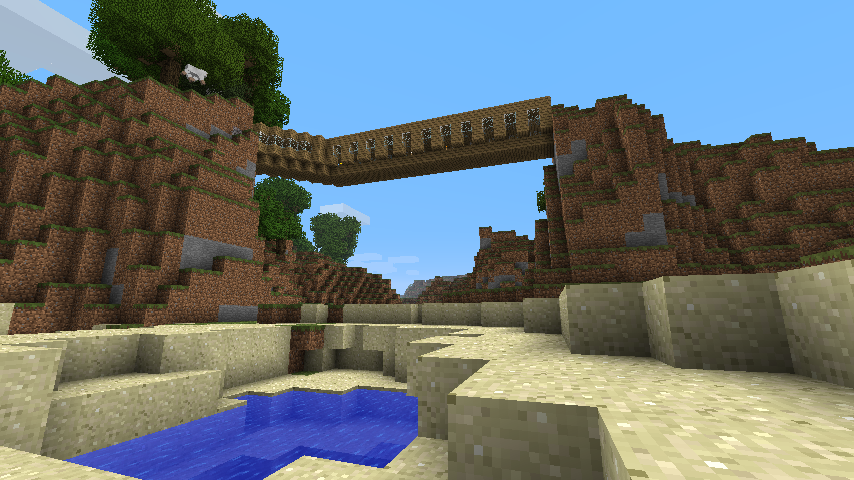
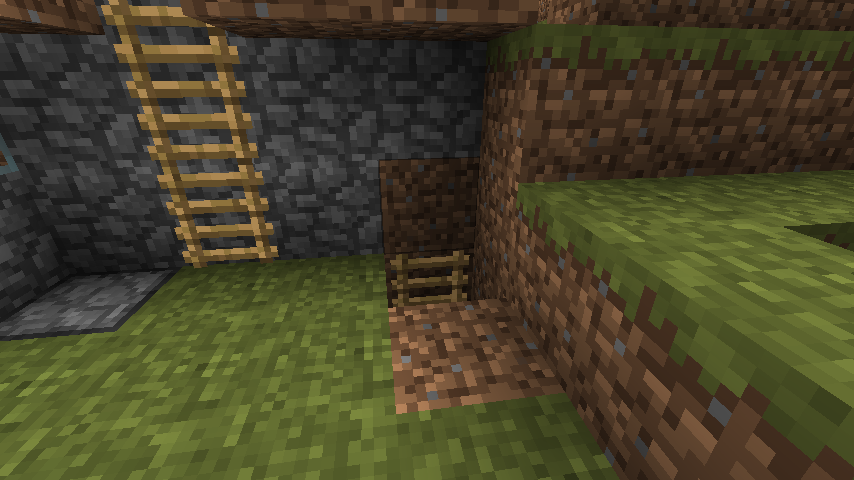
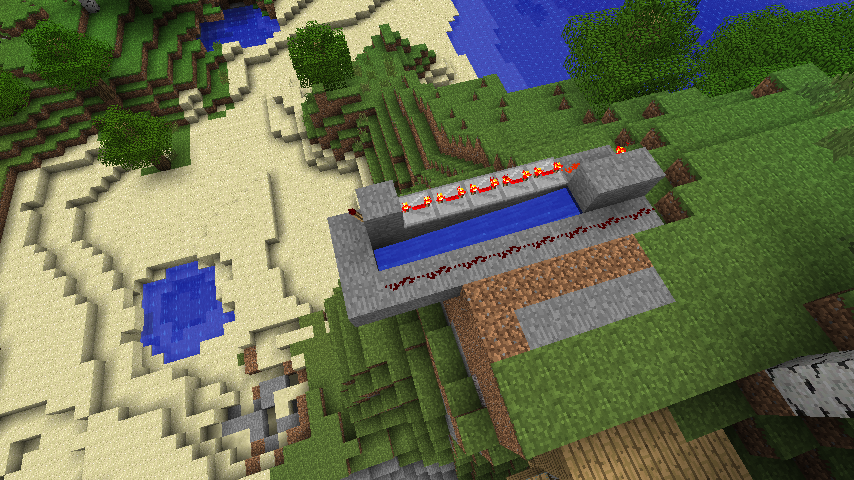
No comments:
Post a Comment